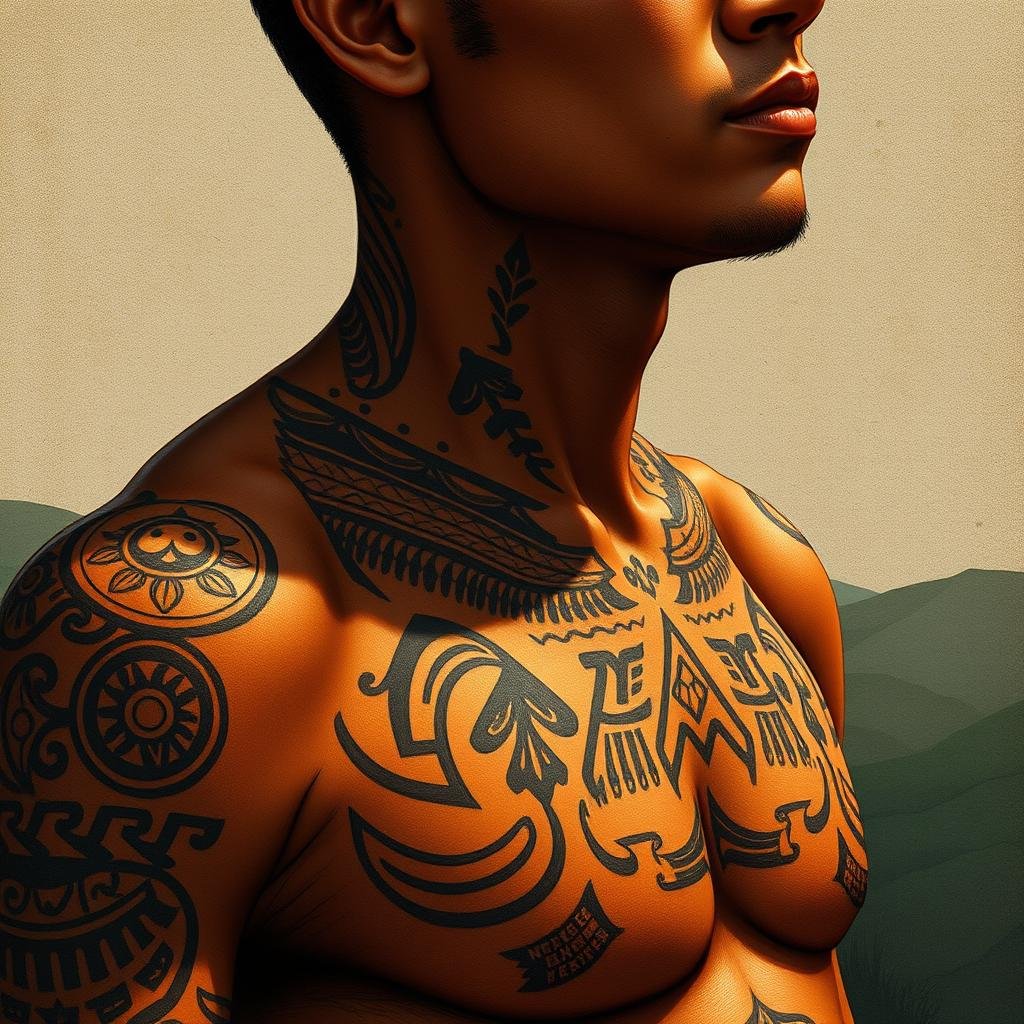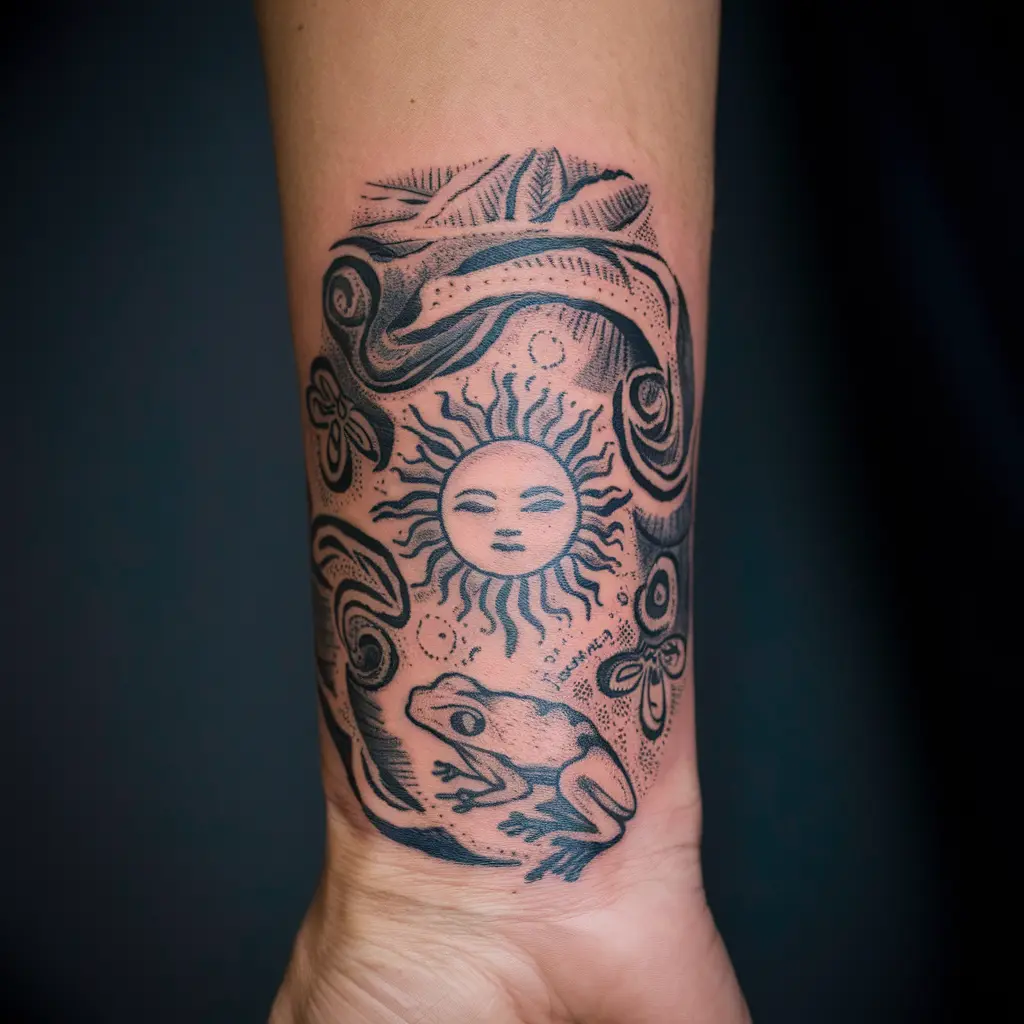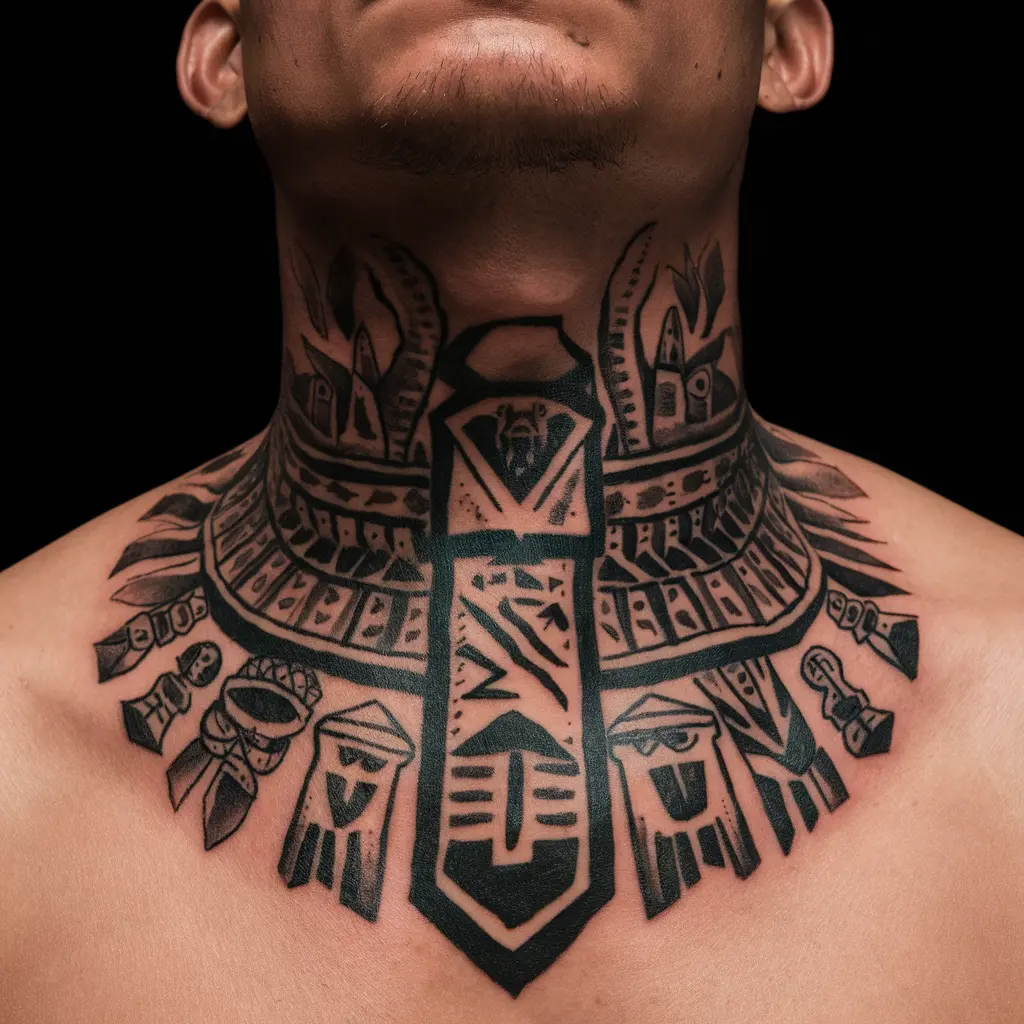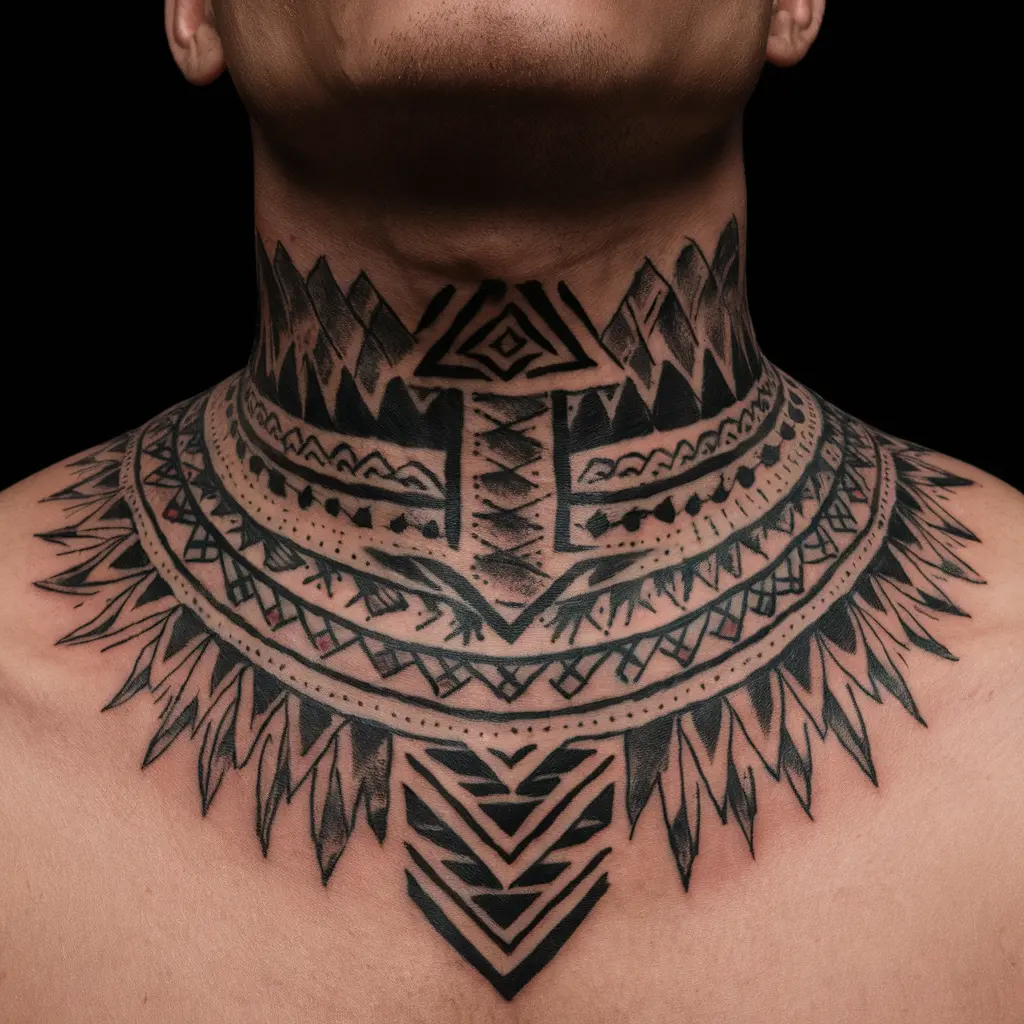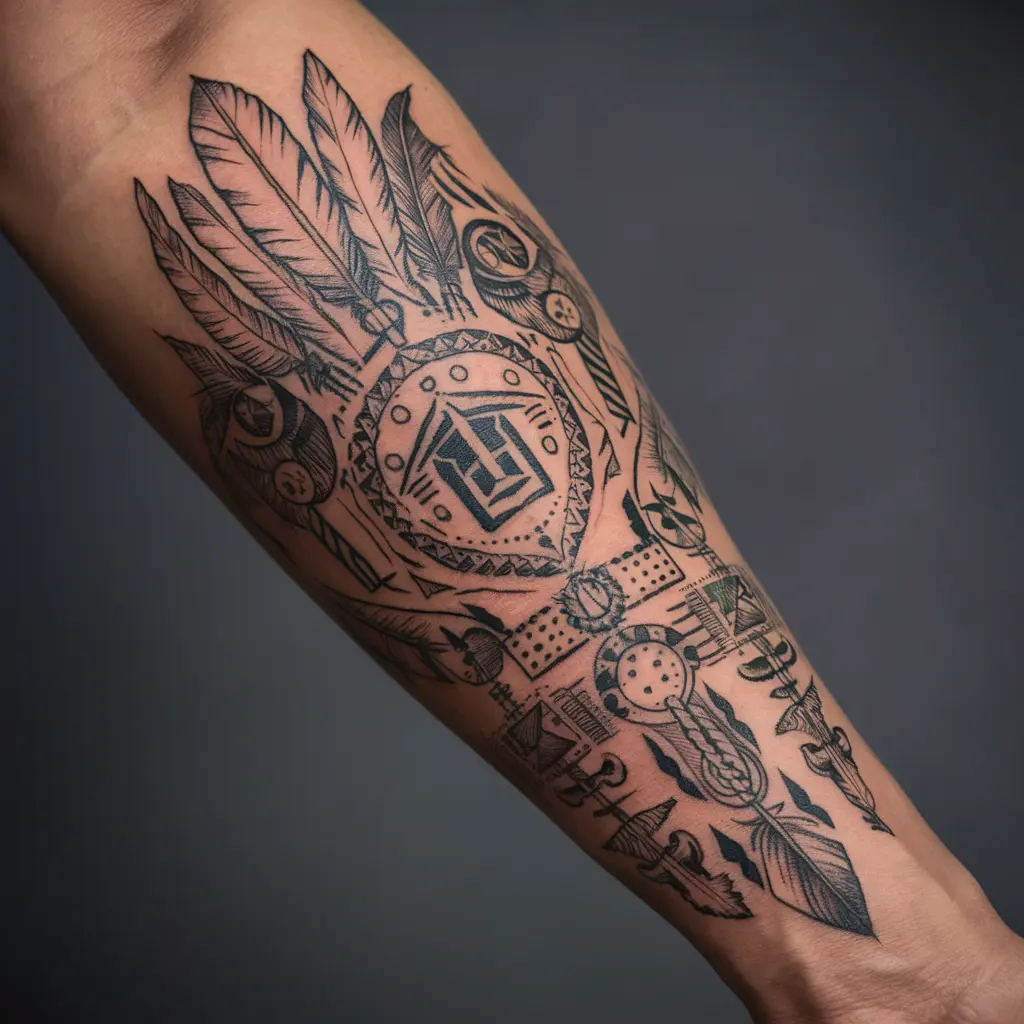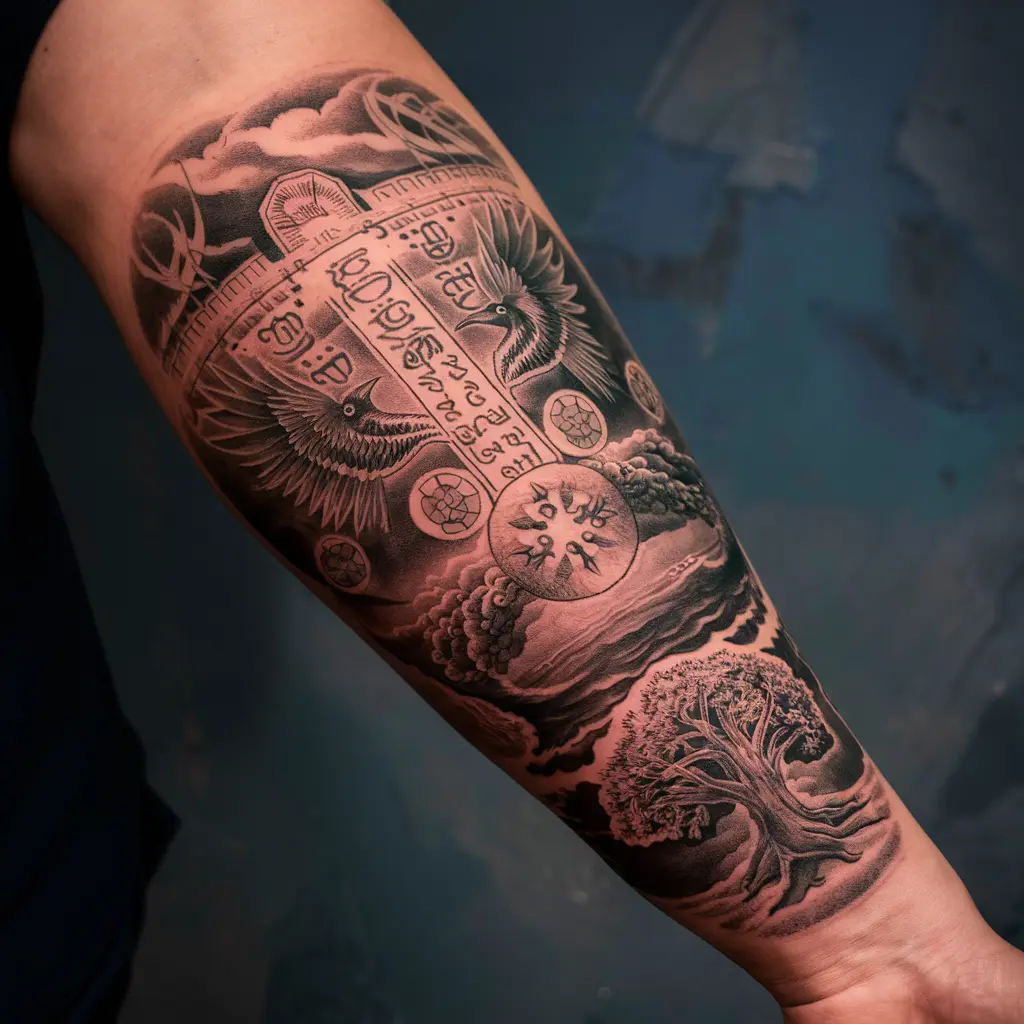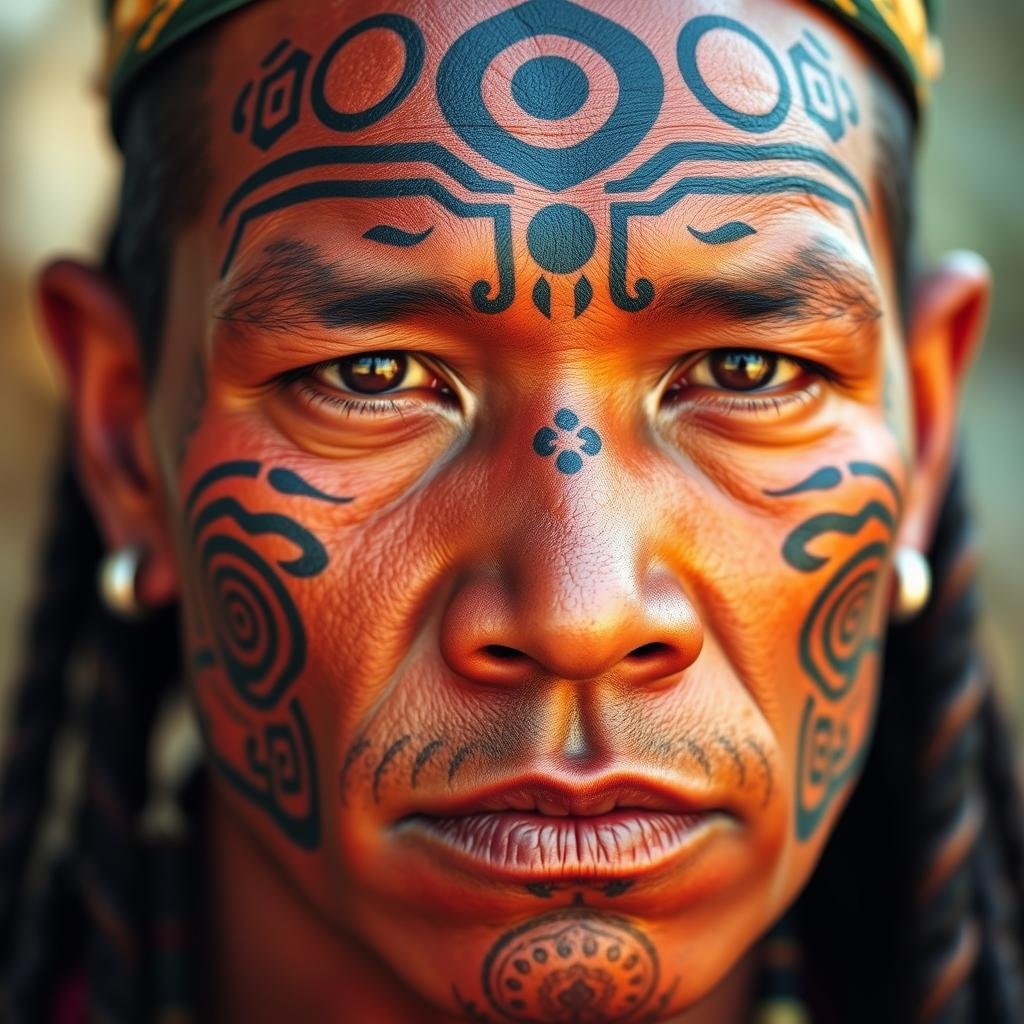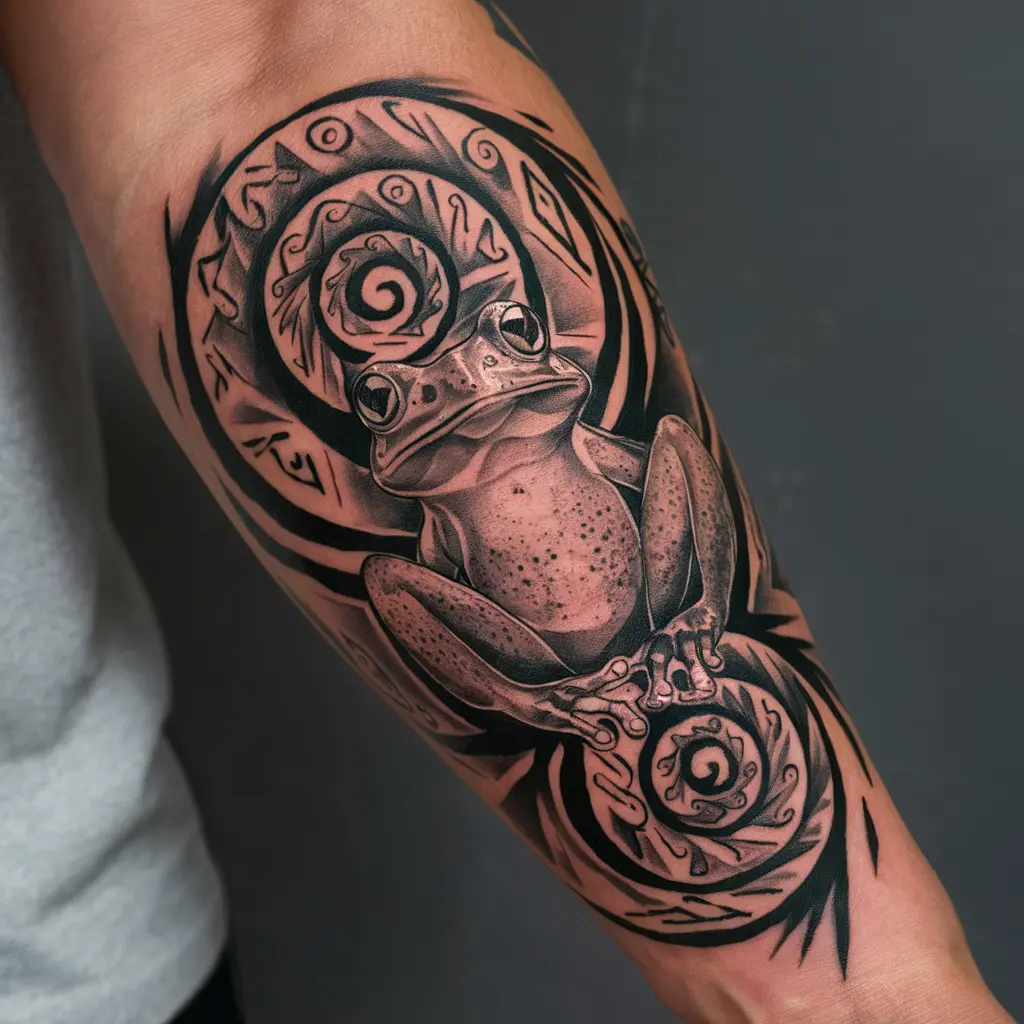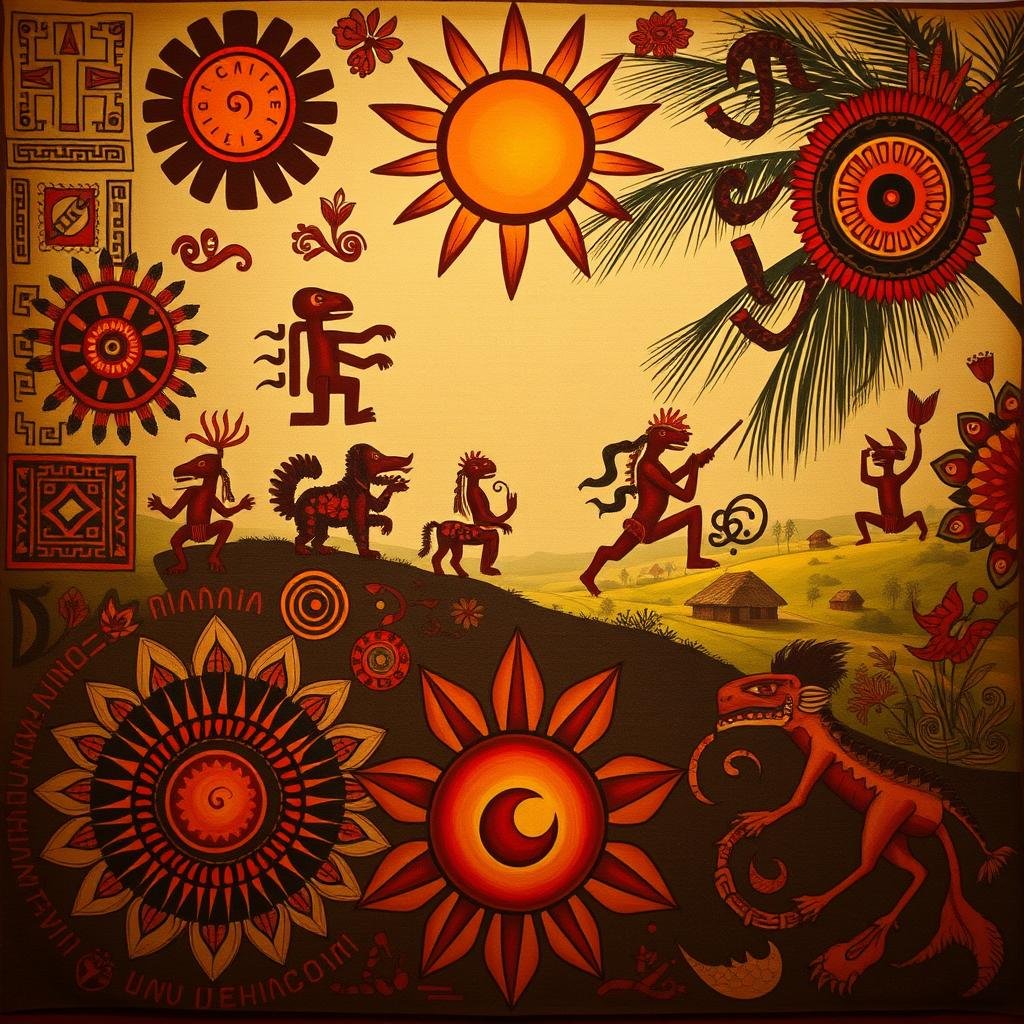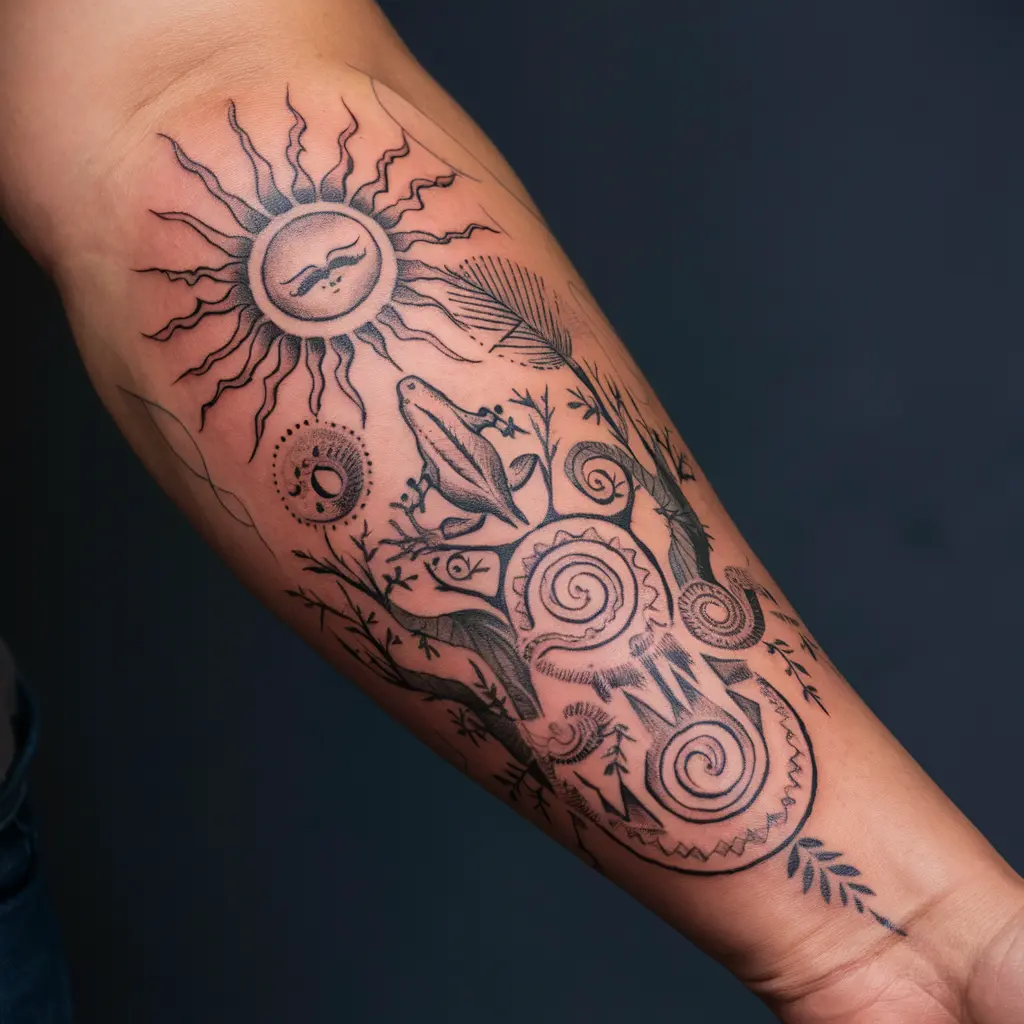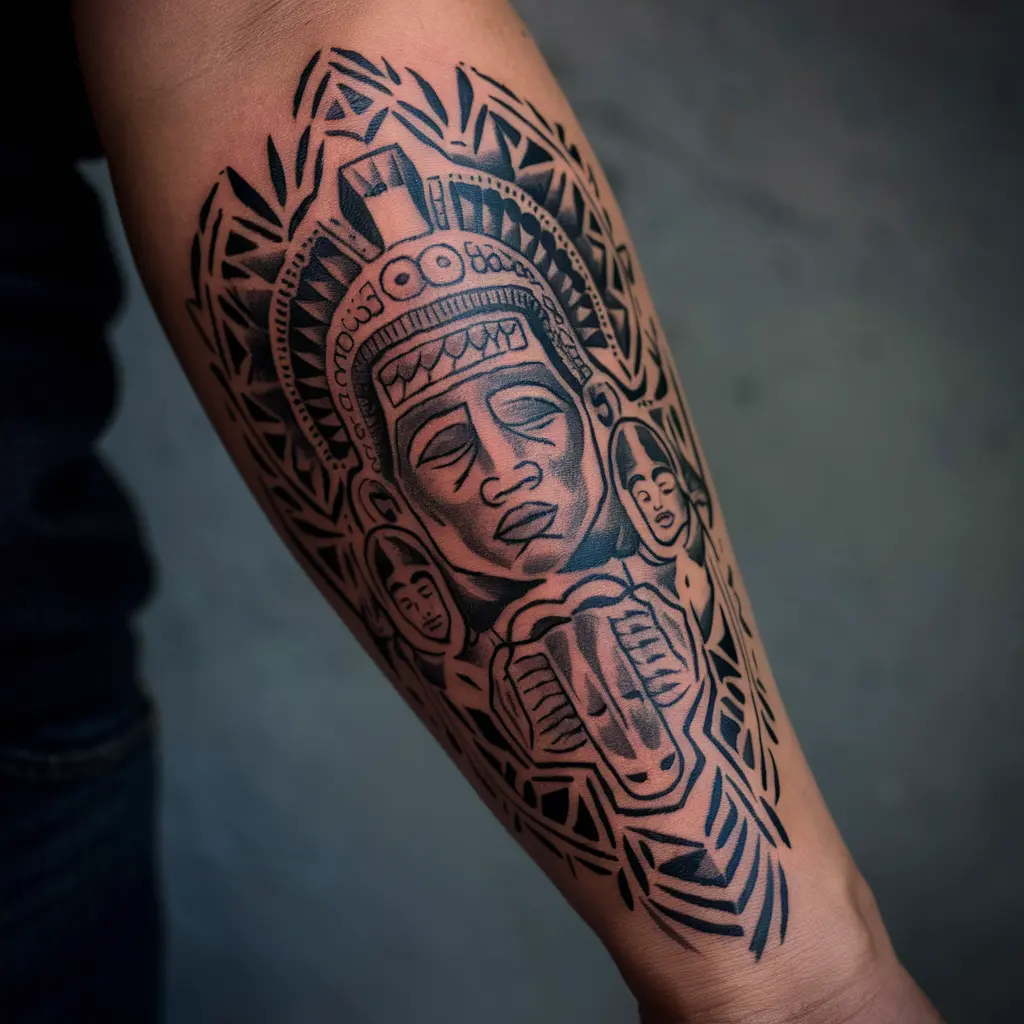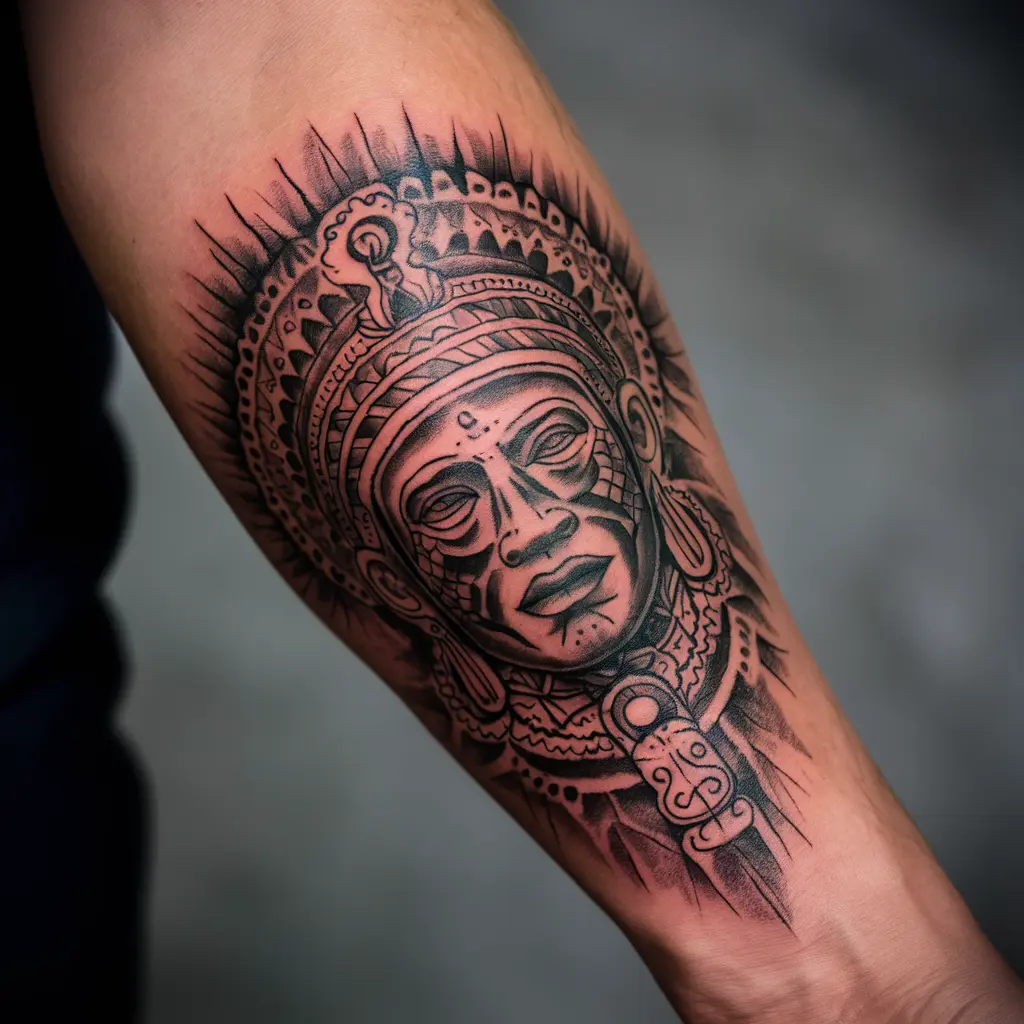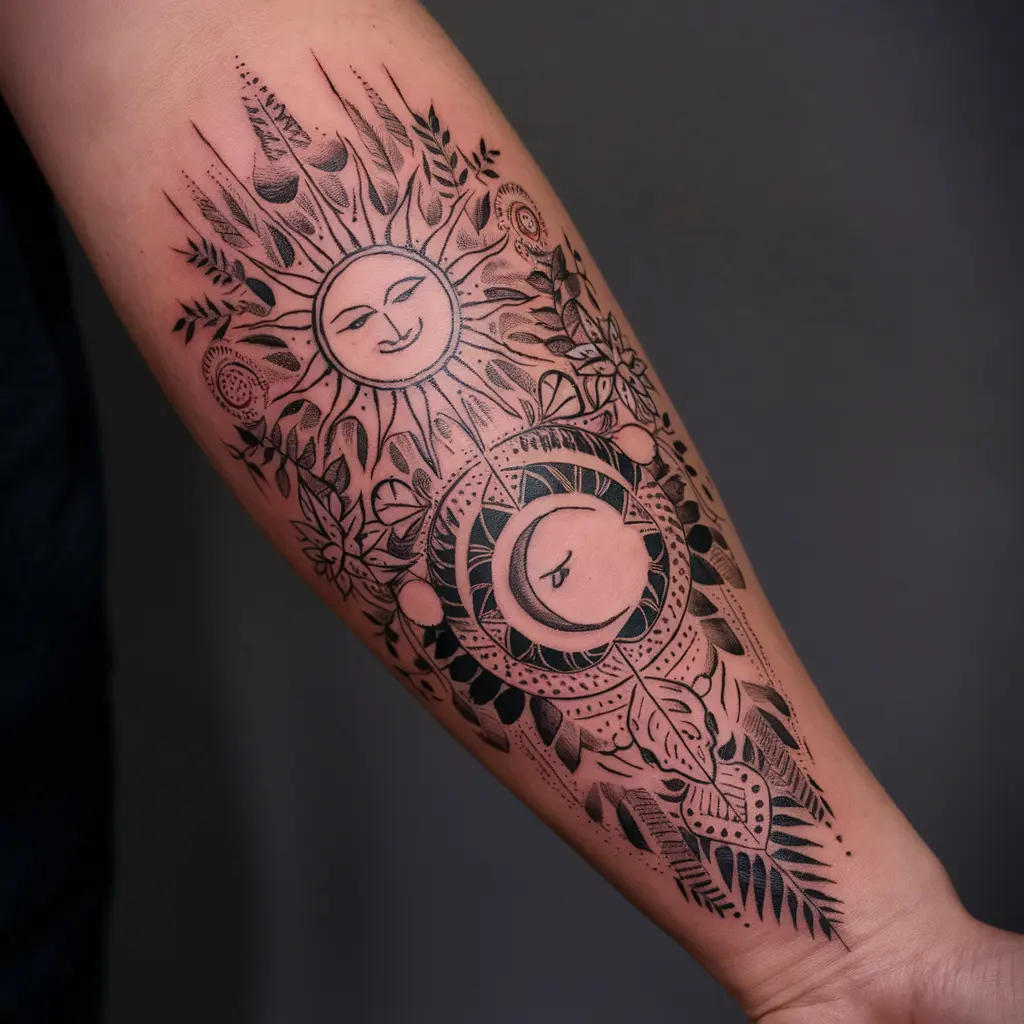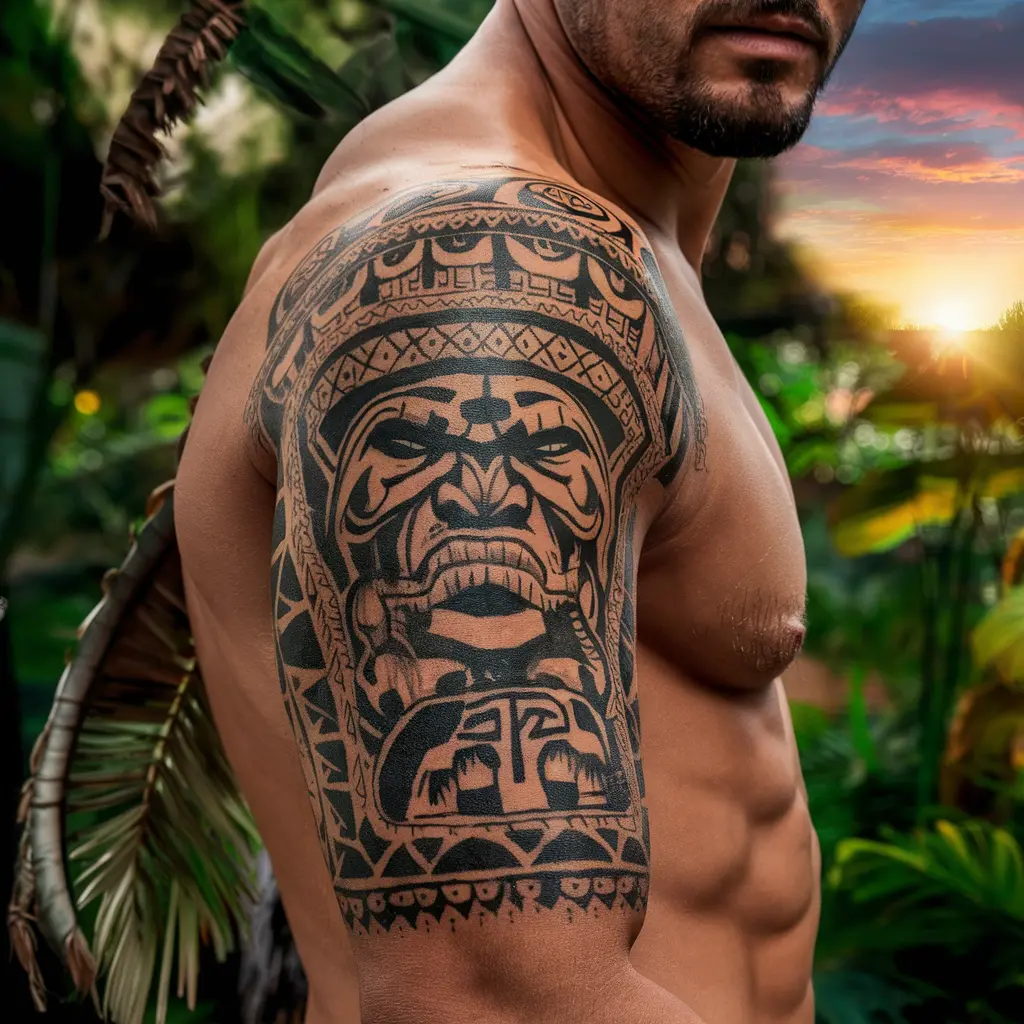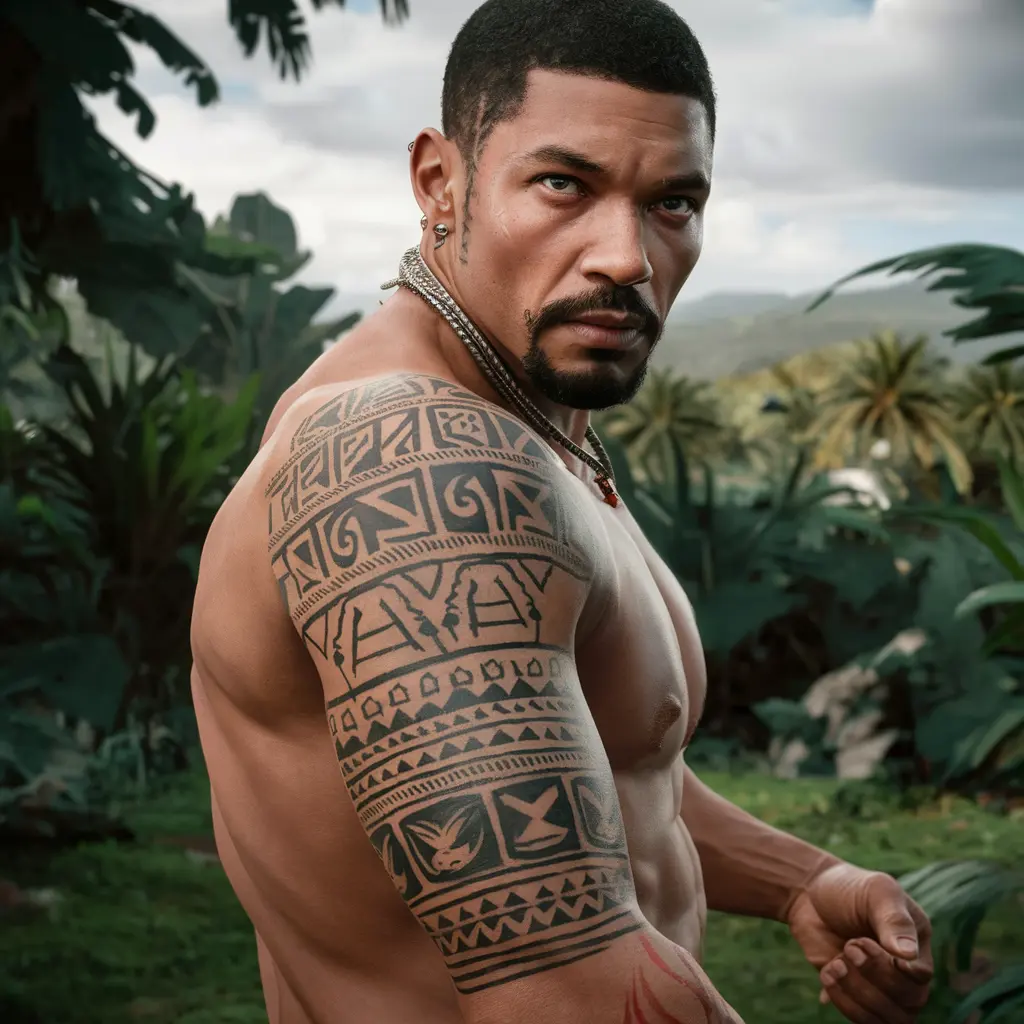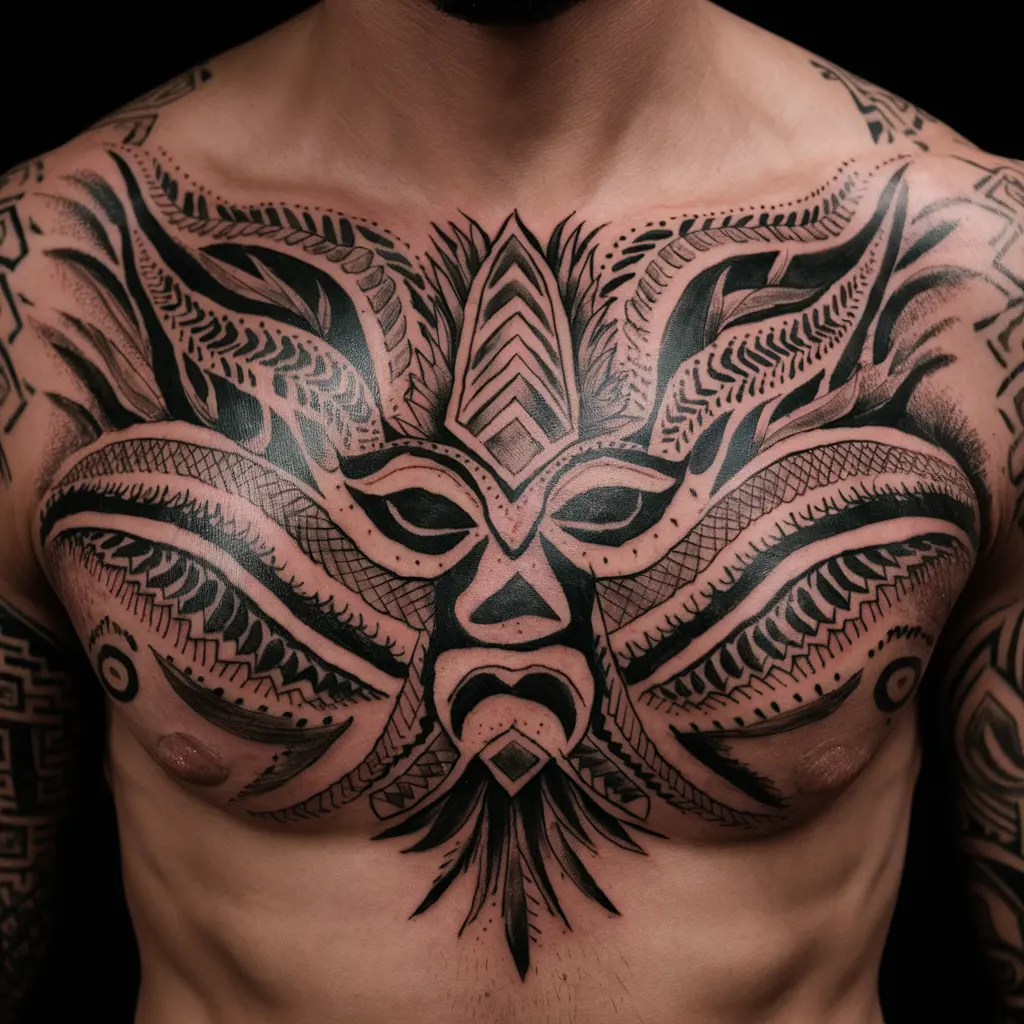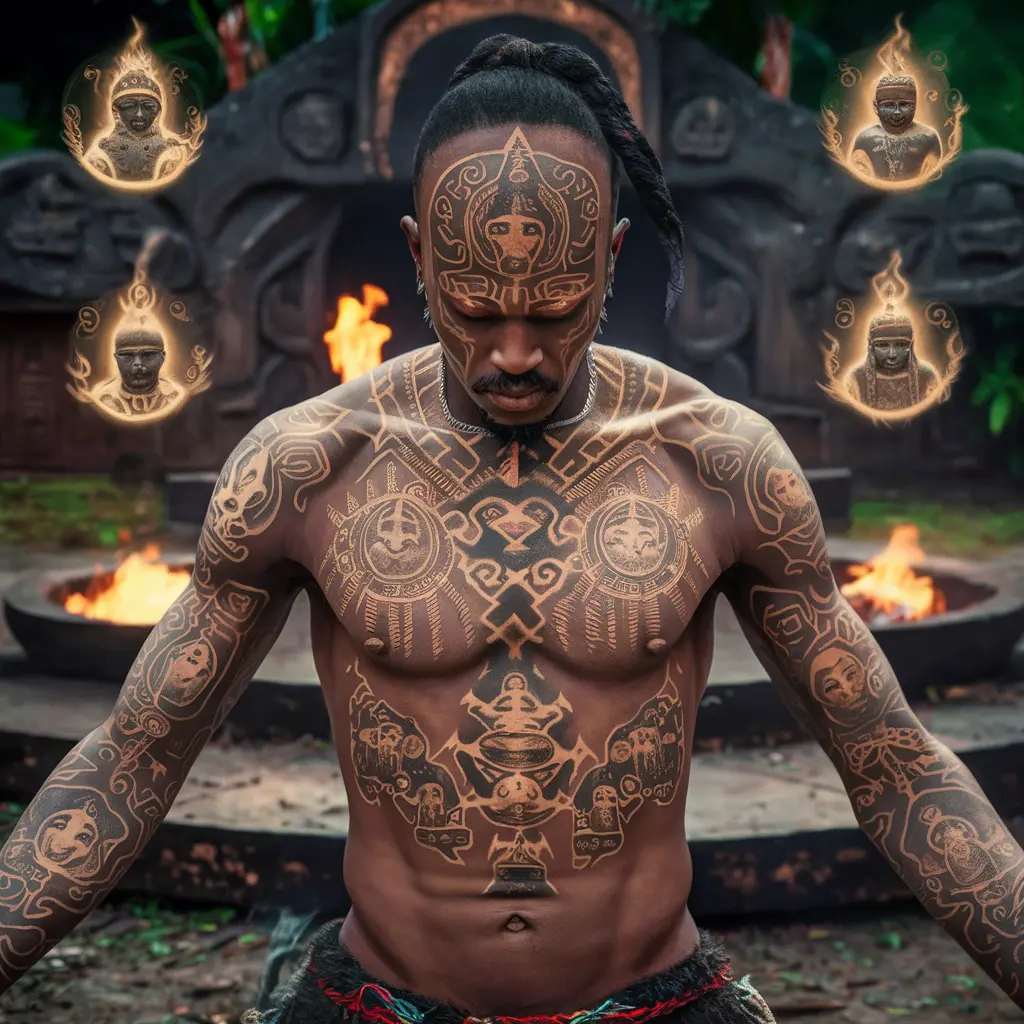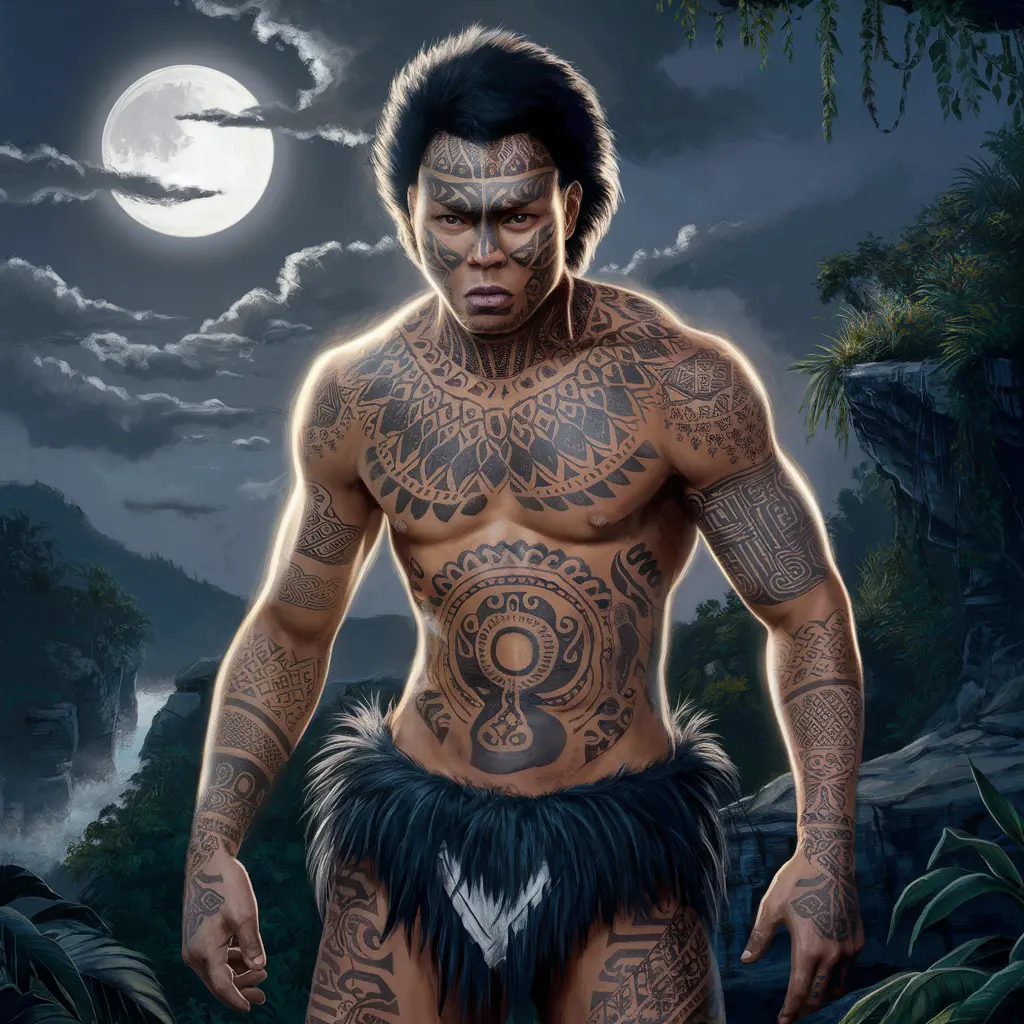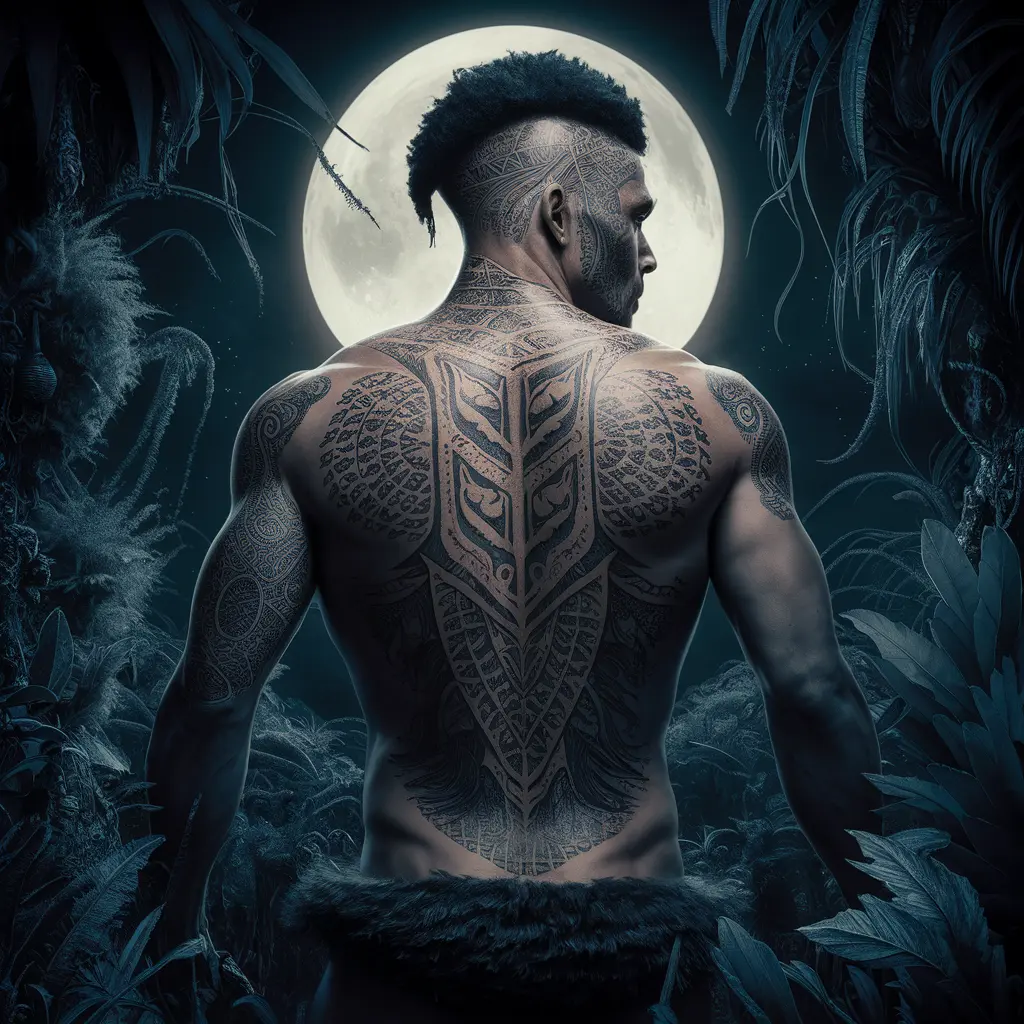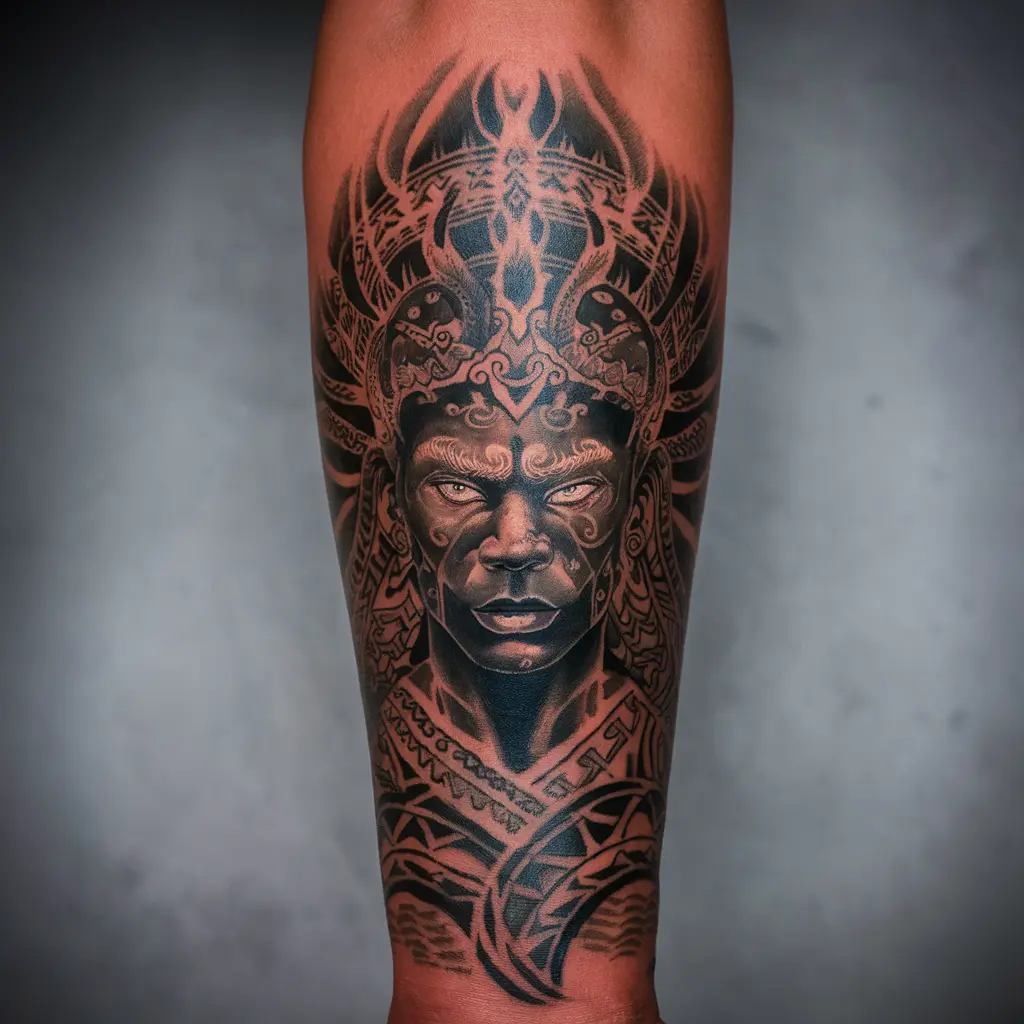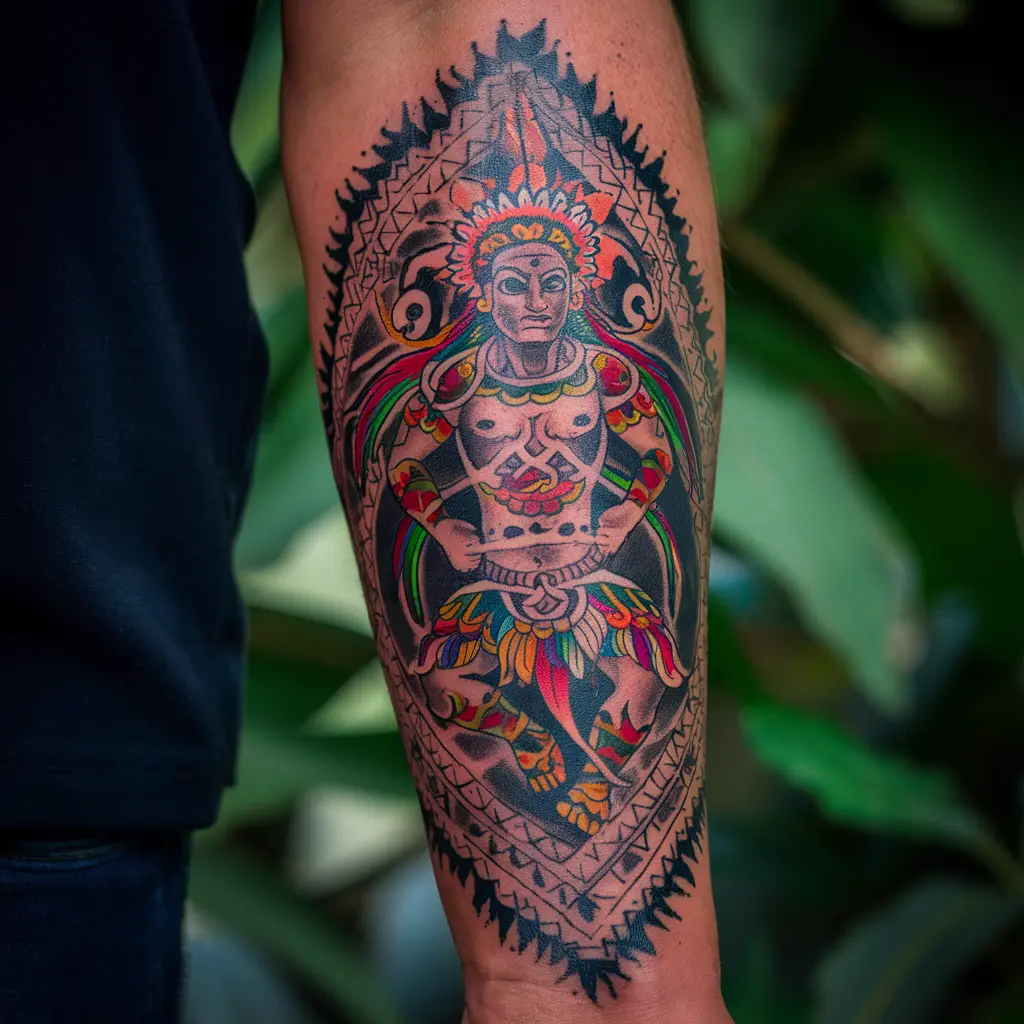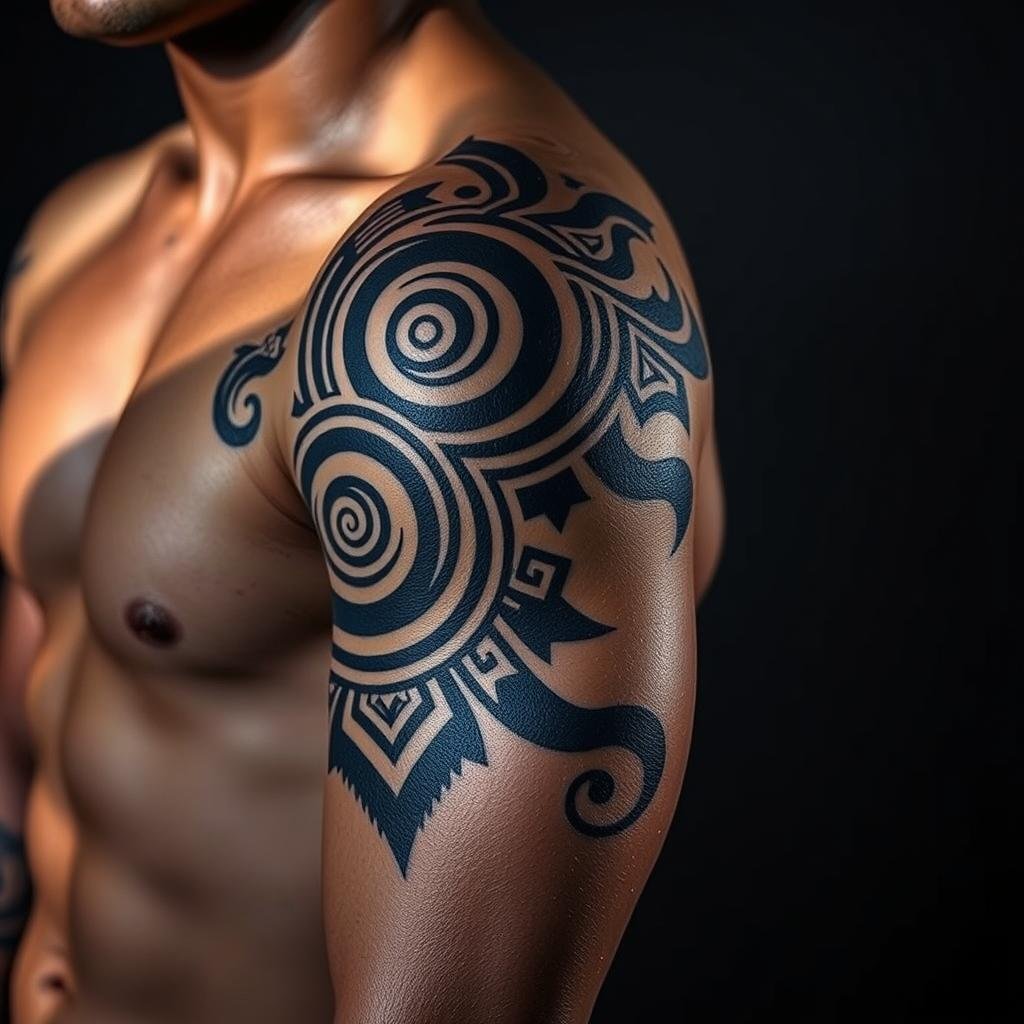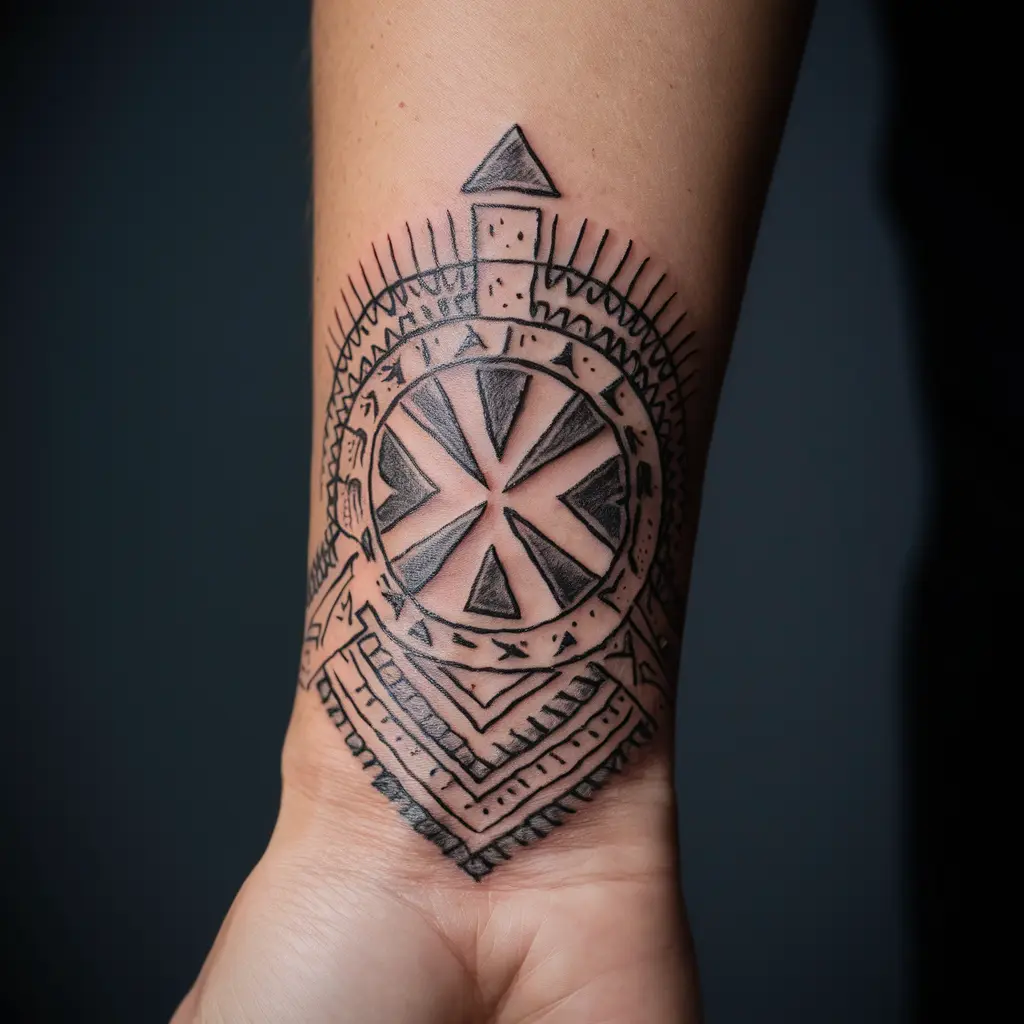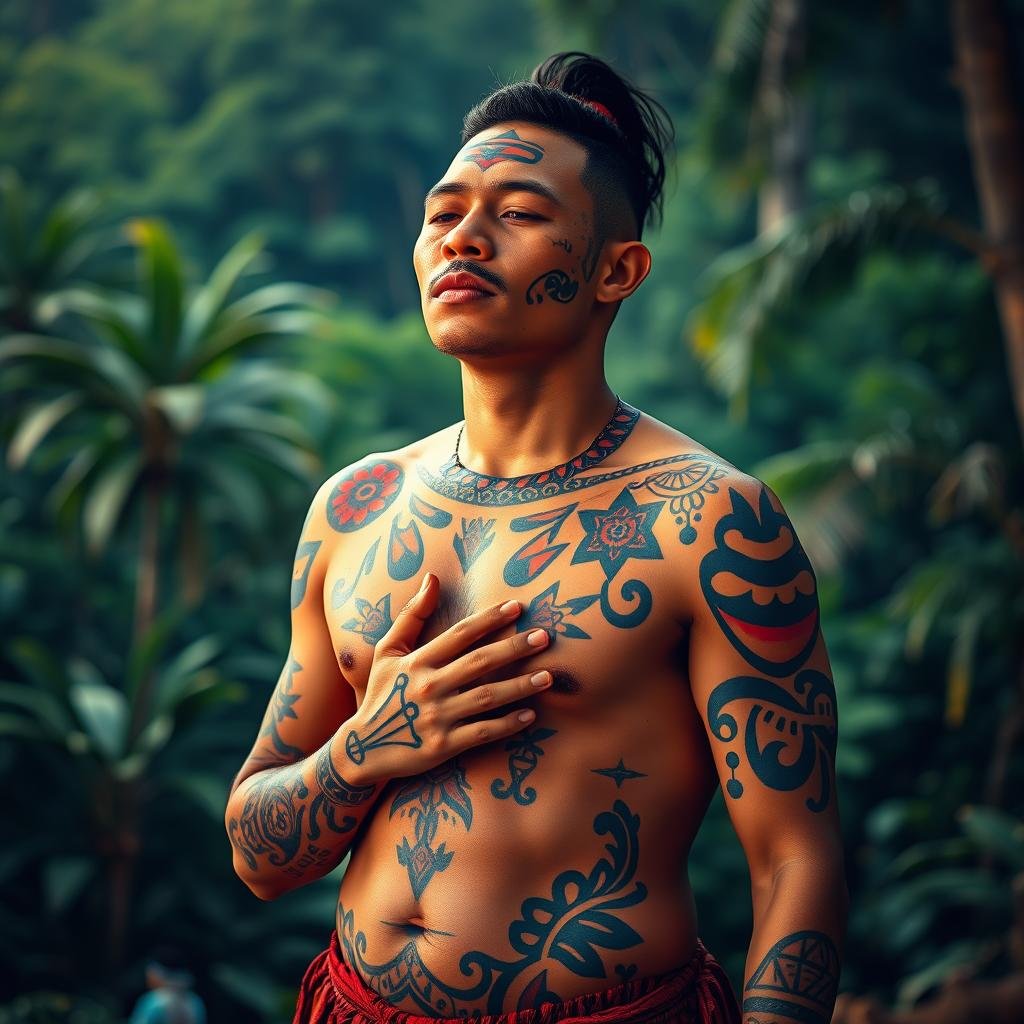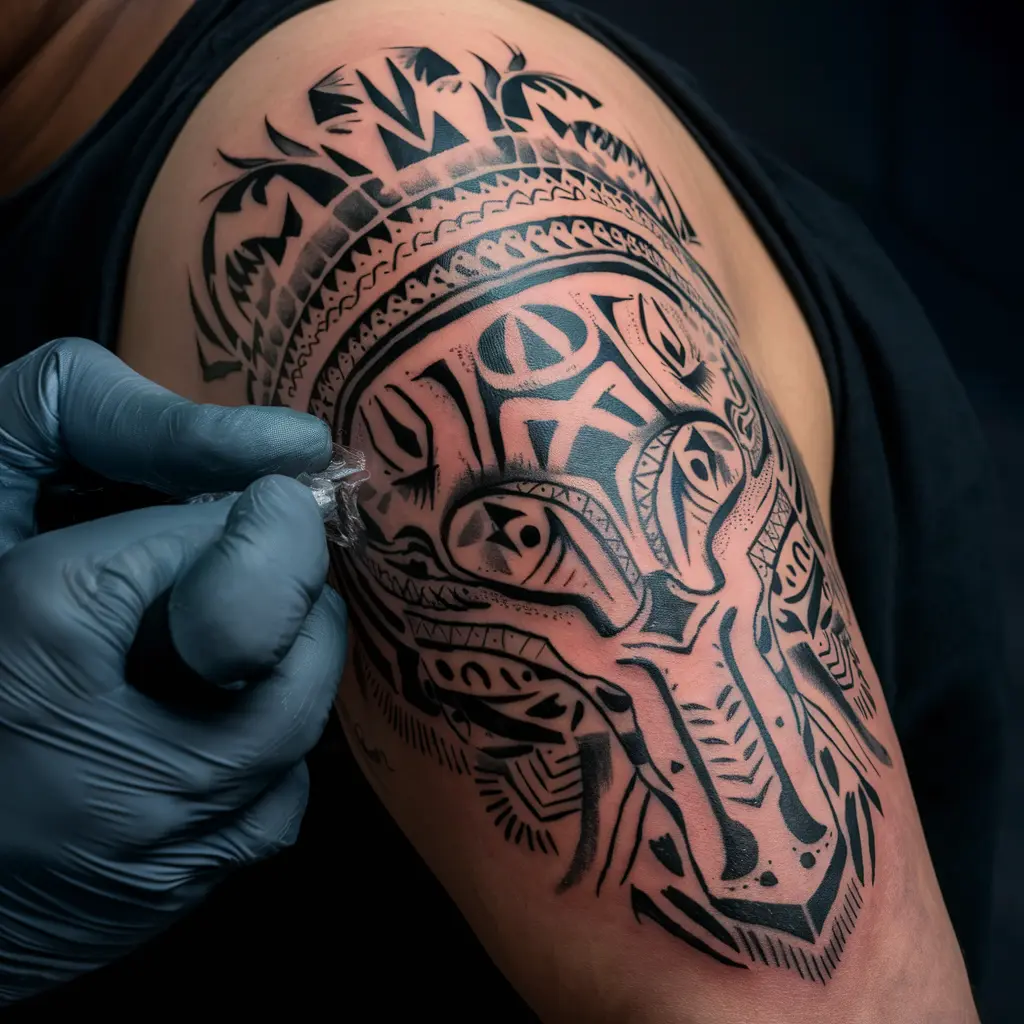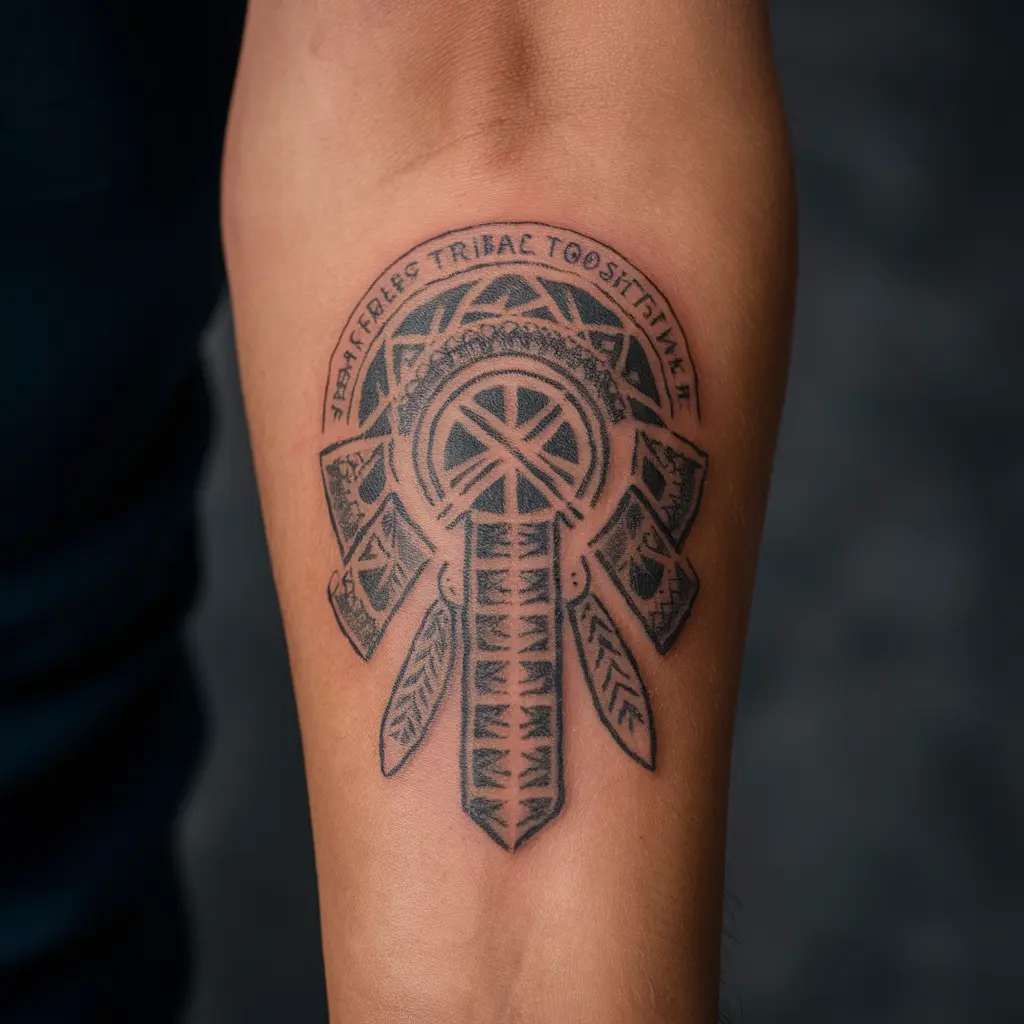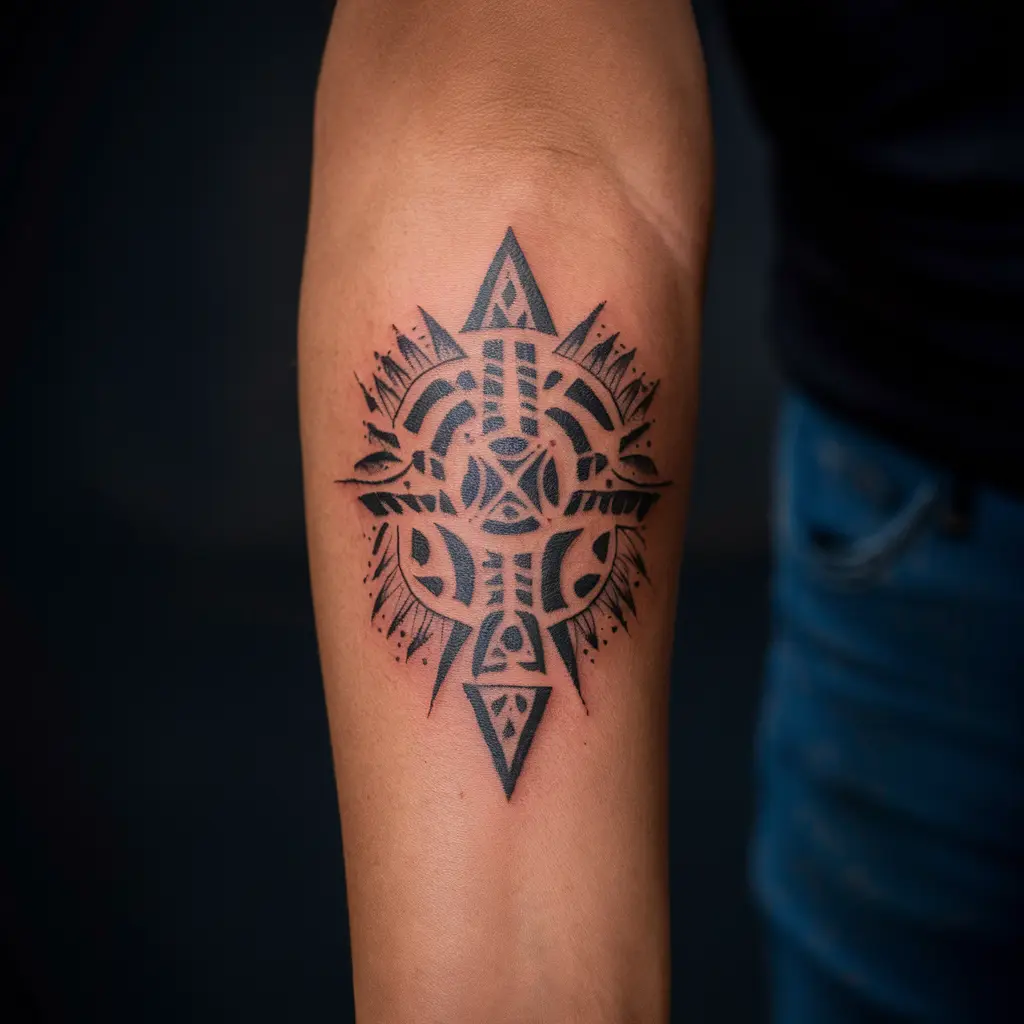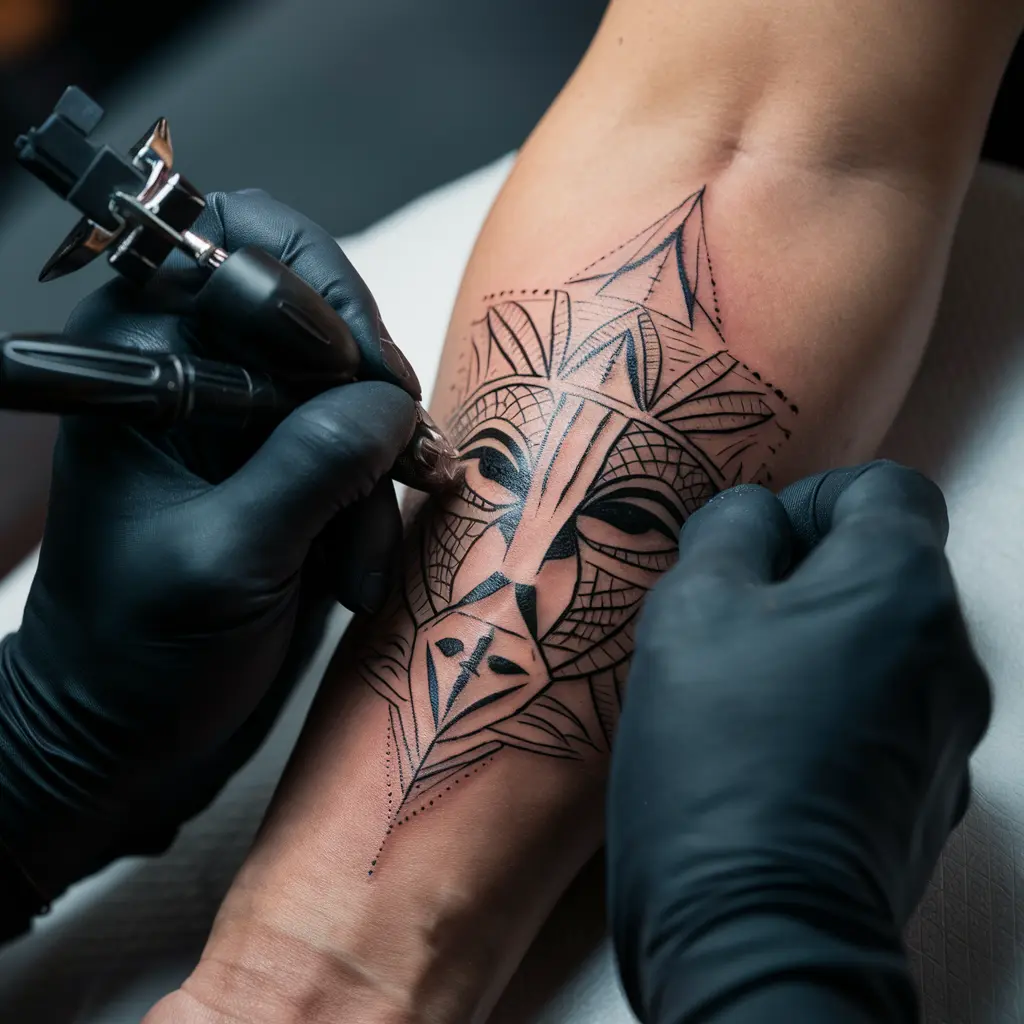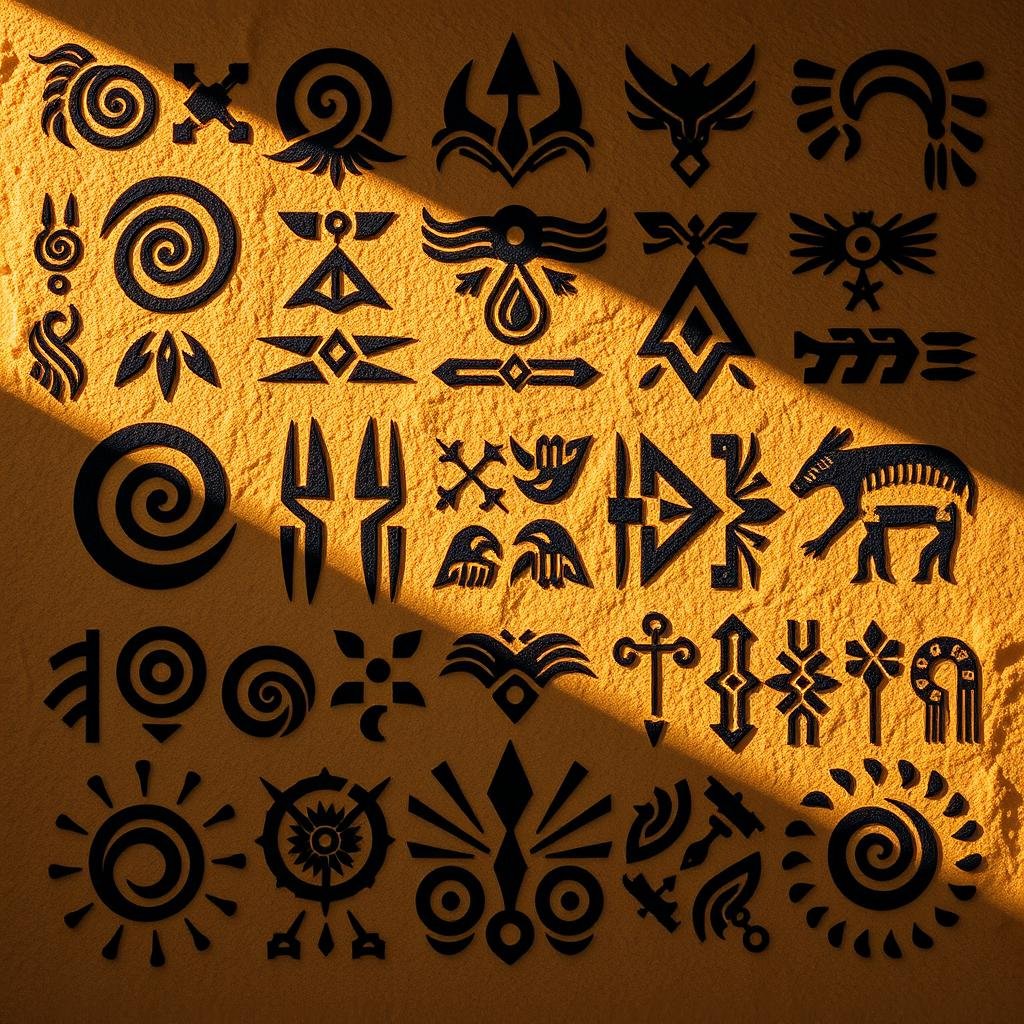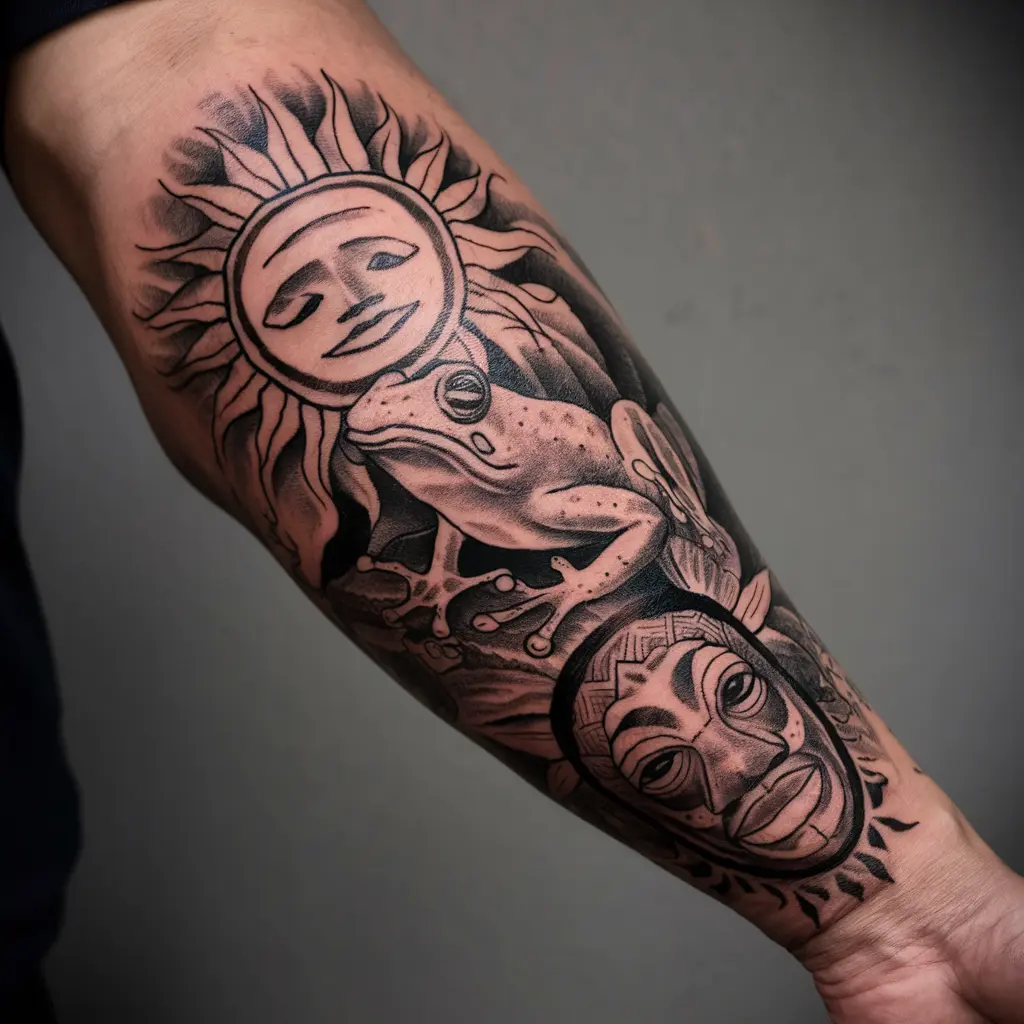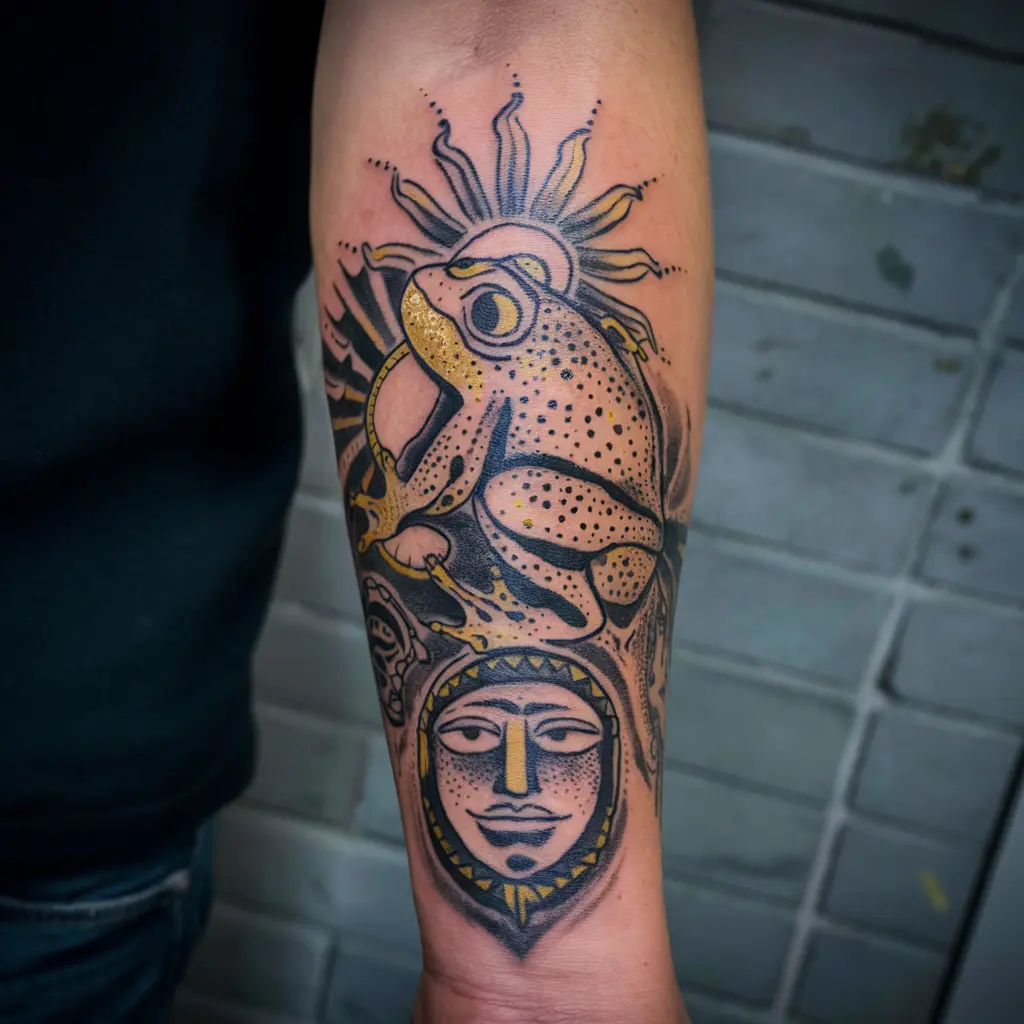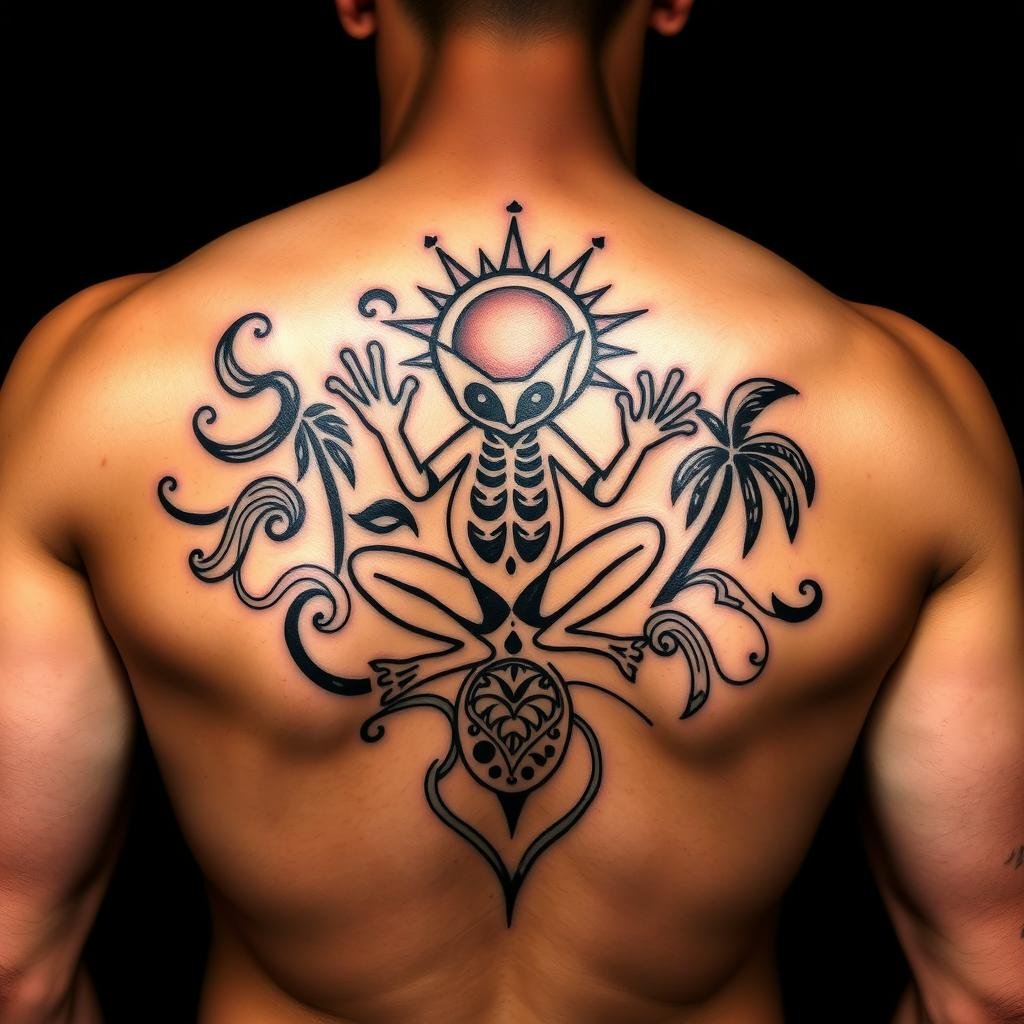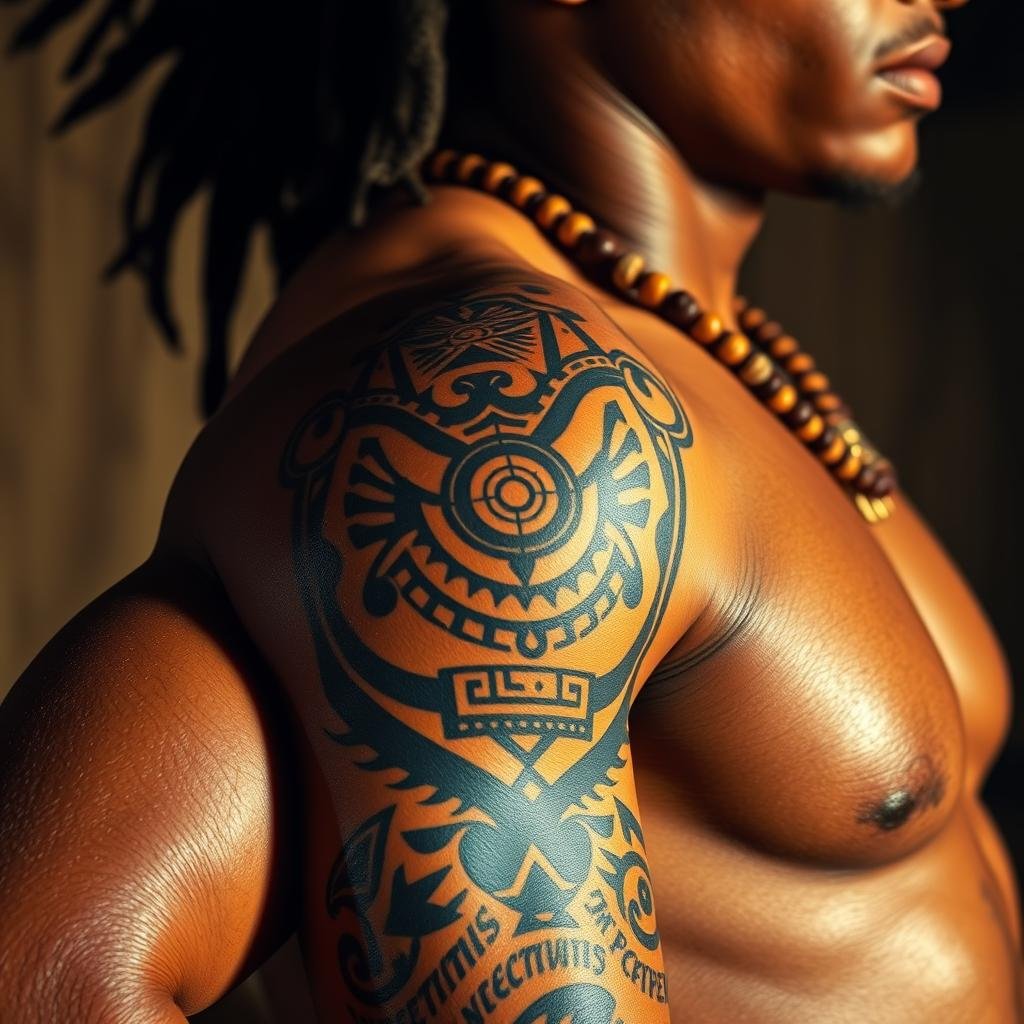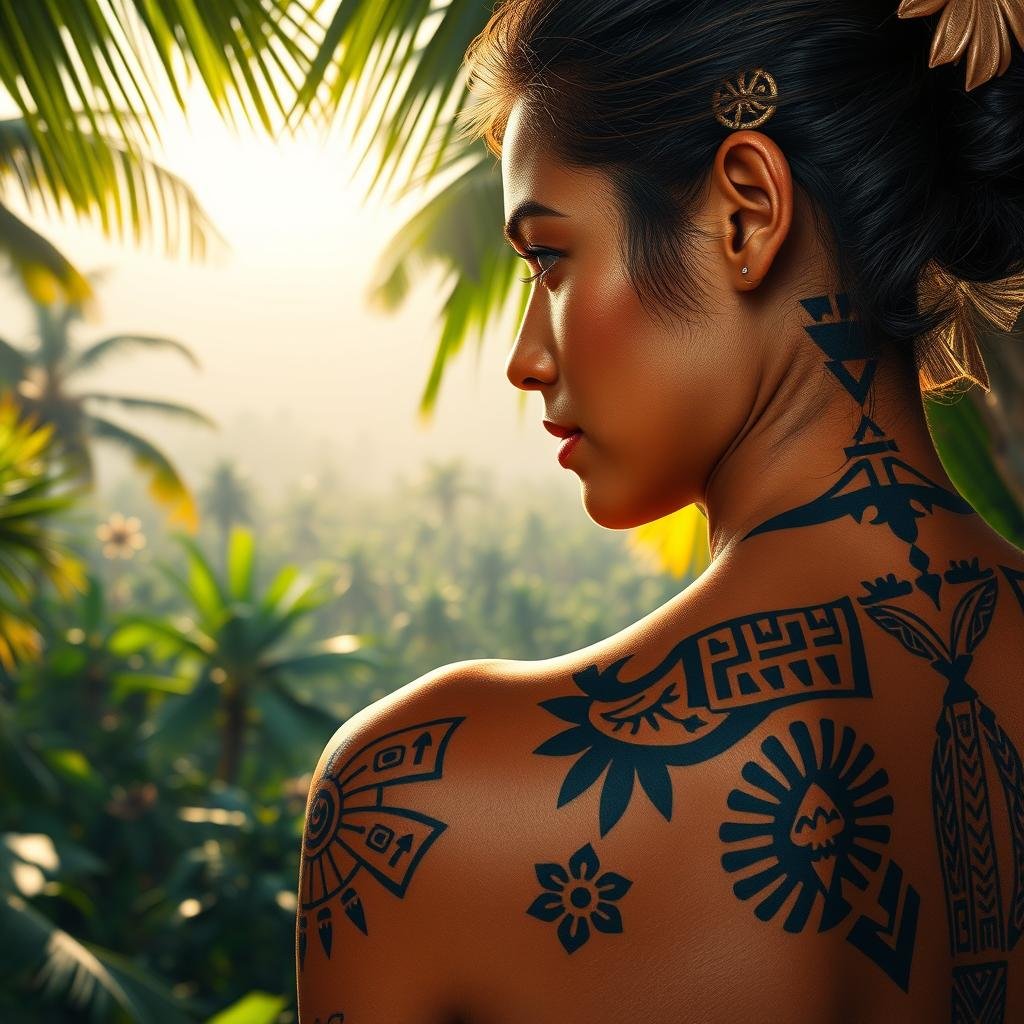Christopher Columbus met the Taíno people in 1492. He found a culture full of art and deep spiritual meaning. Their tattoos told stories of who they were, their status, and their bond with nature.
Taino tattoos were more than just designs. They were a way to share stories and show one’s place in the community. These tattoos were found all over the Caribbean, each with its own special meaning.
Exploring Taino tattoos takes you on a journey of survival and pride. These designs have survived for centuries, showing the strength of indigenous heritage and art.
Taino tattoos are more than just body art. They are a window into a complex society that once flourished in the Caribbean. These tattoos show the Taíno’s deep connection to their culture and their world.
Understanding the Taíno Heritage and Cultural Significance
The Taíno people were a vibrant group that lived in the Caribbean before Europeans arrived. They came from the Arawak people and lived in places like Puerto Rico and Cuba. Their culture is now seen in tattoos that show their heritage.
Origins of the Taíno People
The Taíno came from the Arawak migration. They lived in harmony with nature and had deep spiritual beliefs. Their culture was rich and unique, with symbols that told stories and connected them spiritually.
Historical Significance in Caribbean Culture
By 1550, the number of Native people had dropped a lot. But in the 1970s, the Taíno movement started. It showed their strength and kept their culture alive through tough times.
Role of Body Art in Taíno Society
Tattoos meant more to the Taíno than just looks. They showed status, beliefs, and achievements. Today, tattoos keep their stories alive, connecting us to their world.
The Sacred Symbolism Behind Taino Tribal Tattoos
Explore the world of Taino tribal tattoos. Each line and curve has a story of spiritual connection. These tattoos are not just art; they are sacred symbols from ancient Caribbean culture.
They show a deep spiritual language. This language connects people to their ancestors and the universe.
The Taino people saw tattoos as a way to talk to spirits. Each tattoo had a deep meaning. It linked the wearer to spiritual worlds.
For example, the coquí frog symbolized fertility and rain. Spirals showed the cycle of life. Taino warrior tattoos were more than bravery marks; they were spiritual maps on skin.
Learning about these tattoos reveals a world of cultural expression. The zemís, or spiritual beings, helped decide the tattoo’s meaning. These markings connected people to their spiritual selves.
Looking at Taino tribal tattoos is more than seeing art. It’s understanding a spiritual language. Each design shares a story of connection between humans, nature, and the divine.
Traditional Taíno Designs and Their Meanings
Taino tattoos show a deep connection to the spiritual and natural worlds. The designs tell stories of old beliefs and how people lived. They also show how much the Taíno loved the earth.
Cemi Symbols and Spiritual Connection
Cemi symbols are very special in Taíno stories. They are faces and figures that mean different things. Each one connects the wearer to gods like Yocahu, who brought fertility and food.
Nature-inspired Motifs
Nature was very important in Taíno tattoos. The sun (Kachi) meant life and energy. The moon (Márohu) was about the cycles of women. These designs showed the Taíno’s love for nature and how everything is connected.
Warrior and Status Symbols
Taino tattoos also showed who was important. Warriors had tattoos to show they were brave and strong. The guanín, a gold pendant, was for chiefs. It inspired tattoos that showed who was in charge.
Ancient Tattooing Techniques of the Taíno People
Explore the world of pre-columbian body markings. Learn about the Taíno people’s tattooing methods. These tattoos were more than art; they were a deep cultural expression.
The Taíno used special techniques to make their tattoos. They used sharpened bones and thorny tools to puncture the skin. Each tool was made with care to create precise tattoos that told stories.
Natural pigments were key in their tattooing. They made colors from plants and charcoal. These colors were rubbed into the skin, making permanent tattoos that showed identity.
The tattooing was a sacred ceremony. Spiritual leaders or skilled artisans did it. It was a sign of strength and commitment to their traditions.
Though these methods are not used today, they show the Taíno people’s rich culture. Their tattoos show the depth of indigenous Caribbean cultures before European contact.
The Role of Body Art in Taíno Religious Practices
Taíno spiritual life was deeply tied to body art. It turned borinquen body adornments into powerful spiritual tools. The detailed arawak tribal patterns were more than just decorations. They were sacred paths connecting people to the divine.
Bohíques, the respected Taíno shamans, knew the deep meaning of taíno symbolic tattoos in religious ceremonies. They used body art to talk to supernatural forces. This bridged the physical and spiritual worlds.
Ceremonial Significance
In sacred rituals, people with tattoos played key roles. Each tattoo had deep spiritual meaning. It showed connections to zemis (deities) and asked for their protection.
The detailed body art was like a visual language. It shared spiritual messages and personal journeys.
Spiritual Protection and Guidance
Taíno people thought some tattoo designs could protect from evil spirits and bring luck. These sacred marks were not just for looks. They were spiritual shields for warriors and spiritual leaders.
Connection to Zemis (Deities)
Each tattoo of a specific zemi was believed to call on that deity’s power. By wearing these symbols, people aimed to connect spiritually. They sought guidance, strength, and protection from their ancestral guardians.
Taino Tribal Tattoos: Modern Interpretations
Today, tattoos are bringing back the Taíno symbols’ rich culture. Modern art is giving new life to old Caribbean tattoos. This lets people connect with their roots in a special way.
Amerindian tattoos mix old Taíno symbols with new art styles. Artists make unique pieces that honor the past and look good today. You can find designs that are very traditional or very modern, for everyone.
For those with Caribbean roots, these tattoos mean a lot. They show pride and cultural identity. Symbols like the Trigonolito and the Behique are now seen in tattoos, linking past and present.
Looking for a small tattoo or a big one? Taíno tattoos are a great way to celebrate Caribbean culture. Each tattoo has a story, linking you to a long history through art.
Cultural Revival Through Contemporary Tattoo Art
The taíno cultural tattoos are coming back. People from the Caribbean are connecting with their roots through tattoos. They make old tattoo designs new again, showing who they are today.
Today’s tattoo artists are very important. They learn about old Taíno symbols. Then, they make new designs that look good today.
Preservation of Heritage
Getting a Taíno tattoo is special for many. It’s about finding their cultural roots. These tattoos tell stories of their ancestors.
Modern Adaptation Techniques
Now, tattoos can look very detailed. Artists use new tools to make old designs look fresh. This makes each tattoo a tribute to old art.
Getting a cultural tattoo is more than art. It’s about keeping stories and traditions alive.
Popular Taíno Symbols in Modern Tattoo Design
Explore the world of taíno tribal ink. Here, ancient symbols come to life in modern tattoos. The Taíno people’s rich culture offers many meaningful designs.
The coquí frog is a favorite in taino body art. It’s from Puerto Rico and means more than just a cute frog. It shows cultural pride and spiritual importance.
Taino tattoos often have the sun symbol. It stands for life and energy. This design honors the Taíno Sun God, showing strength and life.
Cemi faces are also popular. They show Taíno deities and carry deep spiritual meaning. The spiral symbol, for life’s journey, is simple yet powerful.
Choosing a Taíno tattoo means picking a special symbol. Each one tells a story. Whether it’s animals for strength or patterns for culture, it connects you to a rich heritage.
The Influence of Taíno Art on Caribbean Tattoo Culture
Caribbean tattoo culture is rich and deep. It comes from Taíno art traditions. These designs share stories of strength, spiritual bond, and history across islands.
Every Caribbean place sees boriken tattoos in its own way. In Puerto Rico, artists use symbols like the coquí frog. In Cuba, they focus on nature and land, showing the Taíno’s bond with earth.
Regional Artistic Variations
Arwak tattoo designs show Taíno art’s wide reach in the Caribbean. Tattoo artists mix old symbols with new methods. This creates strong pieces of indigenous heritage from Trinidad to the Dominican Republic.
Contemporary Artists and Their Innovative Work
Today’s tattoo artists are making Taíno symbols come alive. They turn old motifs into bright, meaningful art. These artists keep the Taíno’s artistic legacy alive with their detailed work.
Getting a Taíno-inspired tattoo is more than just art. It’s about carrying on a story of survival and creativity that lasts through time.
Choosing Meaningful Taíno Tattoo Designs
Getting a Taíno tattoo is a personal journey into your cultural roots. It connects you to the stories of strength and spirituality from Amerindian skin markings. With over 3500 custom designs, you can find authentic Taíno symbols.
Think about the deep meanings of Taíno symbols like the sun, coquí frog, and turtle. Taino warrior tattoos show bravery and resilience. They honor the proud history of indigenous Caribbean cultures.
It’s important to find a design that speaks to you. Look into Taíno motifs like the trigonolito. You can also mix indigenous elements with modern art. Adding the Puerto Rican flag or Maga flower can make your tattoo even more special.
Your tattoo should mean something personal to you. Learn about the cultural background of Taino symbols. This way, you show respect and appreciation for indigenous heritage.
Cultural Appreciation vs. Appropriation in Taíno Tattoos
Looking into taino cultural tattoos means understanding respect and cultural sensitivity. The history of pre-columbian tattoo art is deep and meaningful. It’s not just about looks.
The Taíno people faced a lot of harm, with their numbers greatly reduced by colonial violence. Today, only a few people claim their Indigenous heritage. In 2010, only 19,839 Puerto Ricans said they were American Indian.
Ethical Considerations
Before getting a Taíno-inspired tattoo, think hard. Do you know the history behind it? Can you explain the symbols’ meanings? Your tattoo should show more than just beauty. It must show respect for Indigenous traditions.
Respecting Indigenous Heritage
If you’re not Taíno, get advice from cultural experts. Talk to tattoo artists who know about Indigenous designs. They can share real insights. Your commitment should be more than just the tattoo. Learn about Taíno history, support Indigenous groups, and help share their stories.
Remember, a tattoo is a permanent choice. Pick designs that celebrate cultural strength and show real appreciation, not just taking things for yourself.
Contemporary Artists Specializing in Taíno Designs
Caribbean tribal designs are making a big comeback. Artists are now making tattoos that mix old traditions with new styles. They are not just tattoo artists; they are also keepers of important cultural heritage.
These artists are studying old Taíno symbols like the Coqui frog and Sun. They turn these symbols into detailed tattoos that tell stories of strength and identity. Their tattoos are more than just pretty designs; they connect us to our ancestors.
In places like Puerto Rico and New York City, artists are making tattoos that honor their roots. They mix old Taíno designs with new styles, creating unique pieces. Each tattoo is a way to show pride in their heritage and the traditions that have lasted through time.
You can find these artists in cities with big Caribbean communities, like Miami and New York. They are dedicated to keeping their art true to its roots. Each tattoo they make is a bridge between the past and today.


